How I Learned Spanish as an Adult: One Man’s Odyssey
Why I Learned Spanish
I was born and raised in San Diego, where basic Spanish is part of the lexicon. Streets have names like Calle Barcelona, Camino del Norte, and Via de la Valle. Neighborhoods have names like La Jolla, Del Mar, El Cajon, and Barrio Logan.
Even the name ‘’San Diego’’ is Spanish – an homage to the Spanish saint San Diego de Alcalá – who never actually stepped foot in San Diego. He died in 1463, more than six decades before the Spanish arrived in California in the 1530s.
However, San Diego’s cultural connections to the Spanish language do not end with the names of streets and neighborhoods. San Diego is the last major city on the Pacific coast before Mexico. Thus, not surprisingly, it has a big Mexican population.
Every neighborhood in San Diego has at least one Mexican food restaurant, and every San Diegan has their favorite go-to spots for Mexican food. Any San Diegan will tell you that San Diego has the best Mexican food in the world outside of Mexico. When a San Diegan tells you that San Diego has the best Mexican food, they are not giving you an opinion. They are stating a fact – as surely as the sun sets over the Pacific.
If you go to a Mexican restaurant and the cooks aren’t speaking Spanish, then it’s not the real thing.
However, Mexican restaurants are not the only place you hear people speaking Spanish in San Diego. Spanish is everywhere. Walk down any crowded street, and you will likely hear at least one conversation in Spanish. All public services have Spanish translations – bus schedules, voter registrations, DMV forms, etc.
When you grow up in San Diego, you grow up with people who speak Spanish. Spanish is part of the high school curriculum. We learned from a young age that speaking Spanish can help you find a job or get into college.
Living in San Diego for more than 30 years, I was asked many times if I speak Spanish. The answer was always ‘’no,’’ and I always felt stupid. How could I have grown up in San Diego and never learned Spanish? I felt like an idiot.
One time in particular, I was training with my boxing coach, Danny. He asked me if I speak Spanish. I said no. He threw his hands up and said, ”Awe, come on, man! You’re from here!” I felt like I had let him down. He wasn’t trying to make me feel bad, but I knew Danny was right. There was no reason why I shouldn’t speak Spanish.
Growing up in this environment, it’s easy to see why I was inclined to learn Spanish – even though I never really did until I was an adult.
The Early Years of My Spanish Development
I think the first Spanish words I learned were the names of popular Mexican foods – taco, burrito, tostada, tortilla, quesadilla, etc. Most Mexican dishes don’t have an English translation – they just keep their Spanish name.
I grew up playing baseball, so I also learned some baseball terminology. ‘’Línea’’ meant ‘’line drive.’’ ‘’Pelota’’ meant ‘’ball.’’ “Mismo’’ meant ‘’the same’’ (as in throw the same pitch again). ‘’Mijo’’ meant ‘’my son’’ (like when a coach was talking to you).
The first formal Spanish classes I took were in high school.
I remember taking my first Spanish course as a freshman at Rancho Buena Vista High School. I was always a good student, but I recall being quite distracted by the girls in my class. I studied and got good grades – my parents made sure of that – but I was usually more focused on the girls than I was on the teacher. As a 14-year-old with raging hormones, it was hardly my fault. I don’t really blame myself.
In my sophomore year, my family moved, and I started at a new high school – La Costa Canyon. Moving to a new school where I didn’t know anybody was tough at first. My Spanish teacher – Ms. Rodriguez – hated me. I’m not sure why she hated me so much. As far as I can remember, she didn’t like me from the get-go.
One time, Ms. Rodriguez kicked me out of class for some trumped-up offense. Instead of waiting outside the classroom in time-out until she called me back in, I left, bought a burrito at the lunch counter, came back, and ate my burrito outside the classroom while I waited. Ms. Rodriguez was furious. She suspended me from her class. I was an A student, and Ms. Rodriguez gave me the only C I ever got in high school. I ended up having to take Spanish in summer school to get that C off my record.
Ms. Rodriguez would never have guessed that, out of all the kids in that class, I would grow up to be a Spanish speaker. If only she could see me now. I hope that she’d be proud.
I took Spanish in my junior and senior years, too. By the time I graduated from La Costa Canyon, I had completed four years of high school Spanish (plus the extra semester of summer school, thanks to Ms. Rodriguez).
Studying Spanish in College
I went to the University of San Diego for college, and language studies were part of the mandatory curriculum to get a degree. I must have learned something in my high school Spanish classes because I took a placement test and passed into Spanish IV at USD – which meant I only had to take one semester of Spanish to graduate.
The highlight of my Spanish class at USD was that we took a field trip to Tijuana. Back then, you didn’t even need a passport to go to Mexico. You could cross the border and come back with just your driver’s license. That’s not the case anymore.
During the field trip, we sampled traditional Mexican foods at local restaurants, drove the city in a tour bus, and visited various cultural sites including La Mona (a 55-foot tall sculpture of a nude woman), the Tijuana Cultural Center, and the Tijuana Arch on Avenida Revolución.
As far as I can remember, that field trip was my first time visiting Mexico and my first time leaving the United States. However, it would not be my last.
I made several more trips to Mexico during college with various groups of friends. We went to Tijuana, San Felipe, Ensenada, and Rosarito. Those trips gave me the opportunity to have basic conversations in Spanish, like ordering from a menu and giving directions to cab drivers (Uber wasn’t a thing yet).
Those college-aged trips were more focused on sightseeing and having fun with my friends than they were on learning Spanish. However, those trips were useful for getting me used to operating in a foreign country, and they sparked a desire to keep traveling internationally and seeing new parts of the world.
A Period of Dormancy, then a Comeback
After college, I went directly to law school at Santa Clara University School of Law. Santa Clara had a different demographic from San Diego. The Bay Area is a melting pot, but I didn’t encounter as many Spanish speakers as I did in San Diego. It didn’t really matter because I was mostly focused on studying for my law school exams. Spanish was not a priority for me while I was in law school. For the most part, I forgot all about it.
I completed law school, passed the California Bar Exam, and got a job working as a personal injury lawyer in San Diego. I practiced law for eight years and hated most of it. Finally, I wised up and decided I didn’t want to be a lawyer anymore.
I stopped being a lawyer and spent two years writing and learning the guitar before I decided to join Peace Corps. When you apply to Peace Corps, there are two ways to do it. You can apply to go to a specific country, or you can apply to a general pool, and Peace Corps will choose the country for you based on your skills and experience. I didn’t have a specific country in mind, and there were many countries that looked interesting to me, so I decided to apply to the general pool and see what happens.
If you want to do Peace Corps in Latin America, there is a language requirement. They only want people who already speak Spanish. If you go to a non-Latin American country, Peace Corps will teach you the local language. However, that’s not the case for Spanish-speaking countries. If you want to work in a Spanish-speaking country, you have to already speak Spanish.
You satisfy Peace Corps’ Spanish language requirement by taking a written test. I signed up for the test and showed up at the scheduled time. I wasn’t particularly confident because I hadn’t studied Spanish since I was at USD, which was 10+ years earlier.
Nonetheless, I took the test and passed – just barely – but I passed. I must have learned something in those Spanish classes – or maybe I was just a good test taker.
Even though I passed the Spanish test (barely), Peace Corps decided not to send me to Latin America. Instead, they put me in Peace Corps Ghana. Before that, I had never imagined going to Africa, but I was excited about the opportunity. I prepared for months, moved to Ghana, and began my work with Peace Corps.
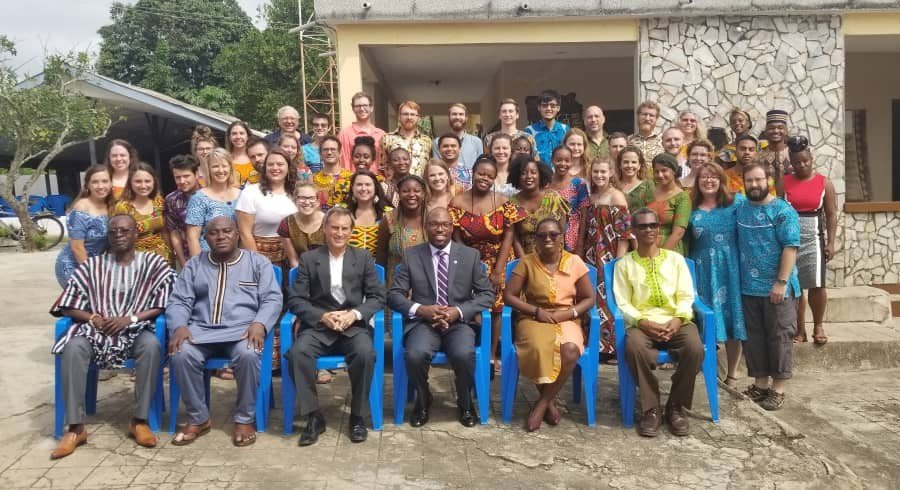
Peace Corps Ghana 2020 Cohort
In Ghana, I studied a language called Likpaakpaaln – which is spoken in the Oti region of Ghana and parts of Togo. I loved studying Likpaakpaaln, and it stoked the fire to keep learning foreign languages. The most practical language for me to learn was Spanish, so I decided that after my Peace Corps service ended, I would move to Mexico and learn Spanish.
The tentative plan was to complete my two years of Peace Corps service, learn Likpaakpaaln to the very best of my ability, travel all over Africa, and then move to Mexico and complete my Spanish studies. The plan was great on paper, but it got turned upside down by Covid.
When Covid struck in March 2020, Peace Corps shut down and sent all of us back home. So, instead of spending two years in Ghana, I was back home in San Diego three months later thanks to Covid. I was completely heartbroken, and I had to figure out my next move quickly.
Moving to Mexico and Studying Spanish
By the time I got back to San Diego, pretty much every major international border in the world was closing due to the pandemic. The only exception was the U.S.–Mexico border.
Before leaving for Ghana, I had sold or given away all of my belongings except my guitar, backpack, and two suitcases full of essentials. In other words, I was already packed to move.
With no job, no place to live, no car, and no plans for the next two years, I decided that the time to move to Mexico and learn Spanish was now. I had been back in San Diego for less than two weeks when I took my backpack, suitcases, and guitar and walked across the border to Mexico.
I took an Uber to the condo I had rented in Tijuana via Airbnb. The plan was to keep myself as isolated as possible so I didn’t contract Covid, so I spent my first three months in Mexico studying Spanish and working out at the condo in Tijuana.
The primary tools I used to study were flashcards (for vocabulary) and books (for grammar rules). If you want to learn Spanish or any other foreign language, I highly recommend starting with flashcards. Flashcards help you build your vocabulary quickly.
I recommend making your own flashcards. It takes time to make the flashcards yourself, but it’s worth it – writing the words down as you learn them helps you remember them. The books I used were helpful for learning grammar, but I think the most important part – at the beginning – was developing my vocabulary. If you have the vocabulary, people will understand you even if your grammar isn’t perfect.
I didn’t have many opportunities to practice Spanish with other people during those first few months due to the Covid lockdowns. People weren’t out socializing, and I didn’t really want to socialize anyway because I didn’t want to get sick.
So, I studied on my own and did the best I could. Every time I went to the grocery store was a learning experience because each time I went, I was learning how to say grocery items in Spanish. By going to the store, I learned the Spanish names for fruits, vegetables, meats, toiletries, drinks, and other common grocery items. Although I didn’t have many opportunities for conversation, my Spanish vocabulary increased, and my confidence grew.
After three months of studying Spanish – mostly alone with books and flashcards – I felt confident enough to move deeper into Mexico.
Traveling in Mexico – León
Given that it was during prime Covid, one of the things that crossed my mind was, ‘’What if I get sick? Is my Spanish good enough to talk to the doctor?’’
Living in Tijuana, I was close enough to the border that I could get back to the U.S. quickly if I needed to in case of an emergency. If I moved away from the border, this would not be the case. So, it took a bit of faith for me to make the move from Tijuana to León.
I’m not sure why, out of all the fascinating cities in Mexico, I chose León. My Airbnb host was a pilot for Volaris – a Mexican airline – and he told me a bunch of places in Mexico that I should visit. León looked good to me, so I booked an Airbnb for a month in León and a flight from Tijuana to Silao.
The León airport is not actually in León – it’s in Silao, which is about 40 minutes from León. There’s not much in Silao, and there’s no real reason to go there other than the airport. But in any case, I packed my bags and flew from Tijuana to Silao.
I landed at the airport in Silao but almost didn’t make it to León. I was detained by police at the Silao airport and held for 48 hours before I eventually made it to my Airbnb in León – this is a whole other story that I will share at another time.
Let’s just say I finally made it to my Airbnb in León – albeit two days late, thanks to a police detention.
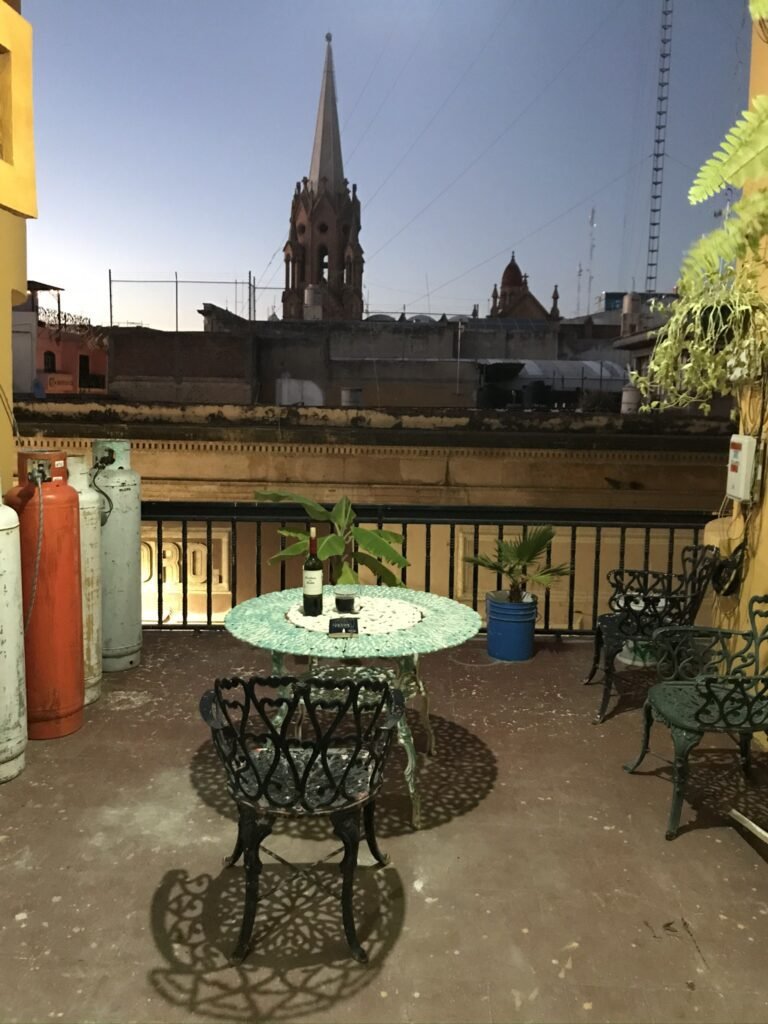
The view from my balcony in León, Guanajuato at sunset.
When I finally made it to León, I felt like the world was my oyster. I was all alone in a brand-new city. Everything I did was new and different. I love to travel, and any time I arrive in a new city, one of my favorite things to do is walk around the entire city.
Walking around a city is different from driving or taking public transportation. It’s a completely different experience. You are more exposed. More vulnerable. You experience how the city smells. You see the people up close and personal. You hear them talk. You hear all of the noises.
Inside a car or other type of vehicle, you are insulated. Walking is rawer. It’s more human. You are watching every person who passes by, and they are watching you. You greet people, and they greet you back – or they don’t. You see if people are friendly or not. You occasionally get lost and have to check the map for directions, or ask bystanders. By walking, you discover things about the city that you otherwise never would have discovered.
Also, walking gives you more freedom. If you are on foot and pass by an interesting shop or building, you can stop and go inside. If you’re stuck in a vehicle, you don’t have that option.
Plus, walking is great for your health. Walking burns calories and keeps you lean. One of the biggest reasons people are overweight is because they don’t walk enough.
When you pass through a city in a car, you are an observer. You’re shielded from the elements (the sun, the wind, the rain), the sounds, the smells, and other people. When you walk, you are no longer an observer. You are a participant. You are part of the streets, and they are a part of you.
Walking is not only great for your physical health – it’s great for your mind, too. Oftentimes, my best ideas come to me while I am walking. Steve Jobs was famous for his walks around Apple’s campus. He knew what I know – walking is great for your brain. I often find the solutions to my life’s greatest problems while walking. Walking helps relieve anxiety and depression. Walking is great for you. If you want to improve your health, walk 8,000-10,000 steps per day.
So, I walked all over León. Within a month, I walked pretty much the entire city. I visited churches and basilicas, discovered parks and recreational areas, and sampled restaurants and cafés. Thinking back on it now, it was probably one of the most fun and exciting times I have ever had.
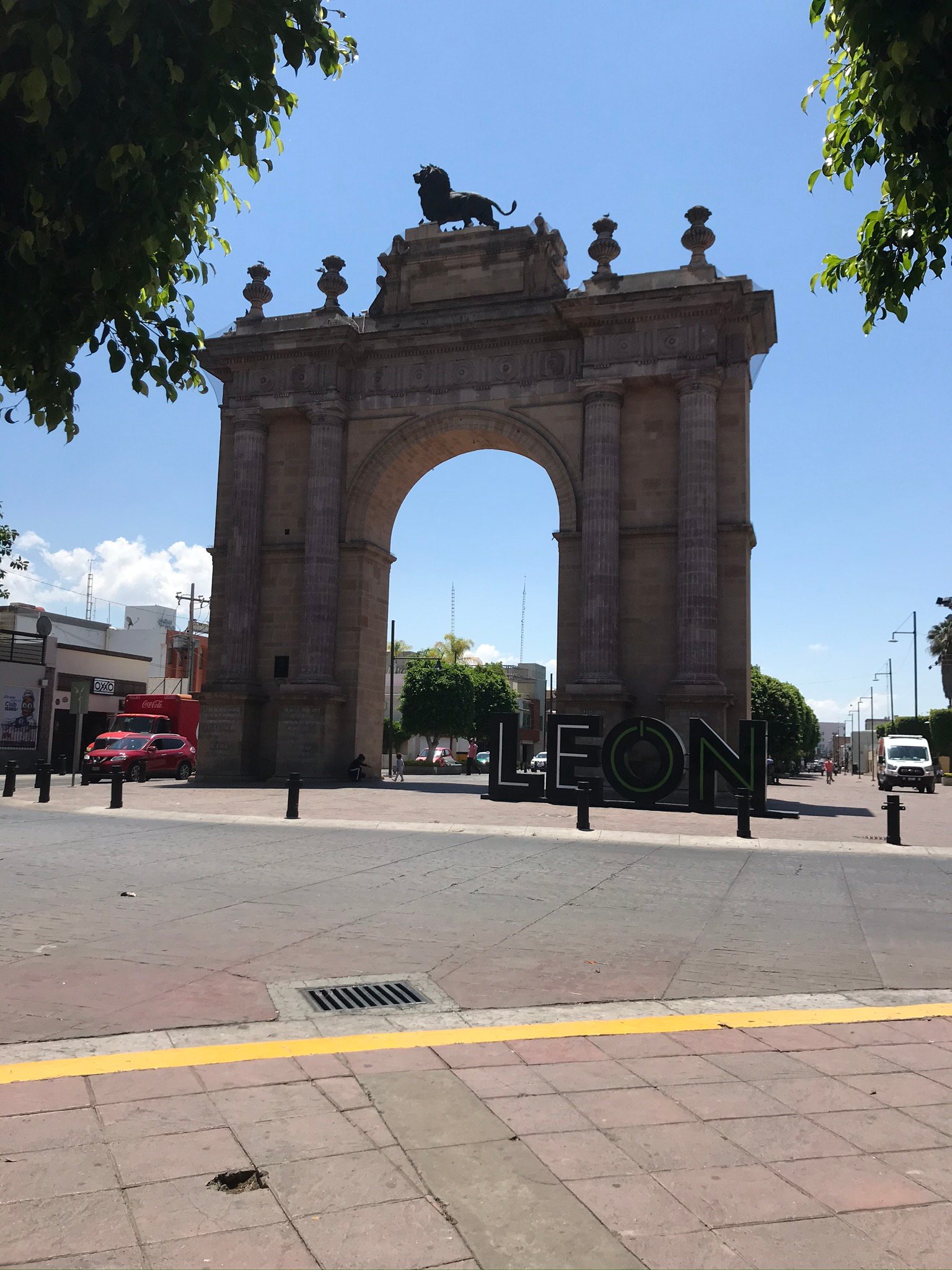
Arco de La Calzada in León, Guanajuato.
My days consisted of studying Spanish, working out at the park near my apartment (El Parque Hidalgo), and walking the city voraciously in search of whatever I could find that looked interesting.
My apartment was in the Plaza de Fundadores, which is one of the central plazas of León. It was a great place to stay because it was in the center of the historic district – right smack in the heart of León. I got to really see and feel what life was like there.
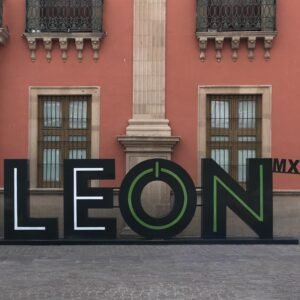
One of the highlights of León is the Templo Expiatorio, a catholic basilica that began construction in 1920. It’s a monumental church that towers over the surrounding neighborhood. One day, I went to visit and pray. On my way out, the person who was working at the gift shop stopped me and asked me if I wanted to see the catacombs.
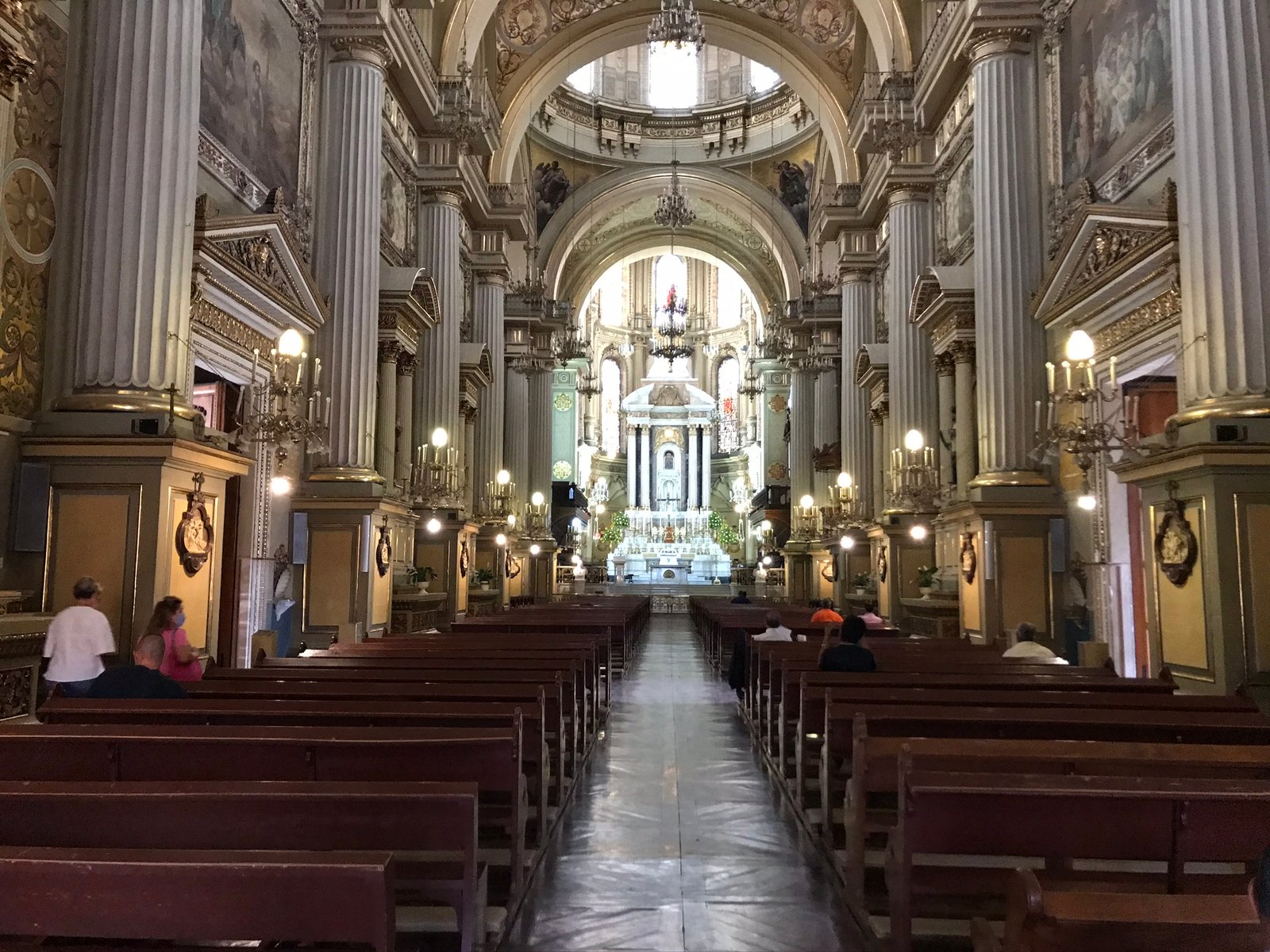
Inside El Templo Expiatro in León, Guanajuato.
Unbeknownst to me, there was an intricate network of catacombs beneath the church that contained the remains of people who were honored by the church. The guide led me through the catacombs for an unexpected and highly interesting tour. These are the benefits of speaking the local language. I didn’t understand everything that the guide said, but I understood enough to keep the conversation going and learn some interesting details about the basilica and the crypts. If it weren’t for my Spanish skills, the tour never would have happened, and I never would have discovered this fascinating underground sliver of the Universe.
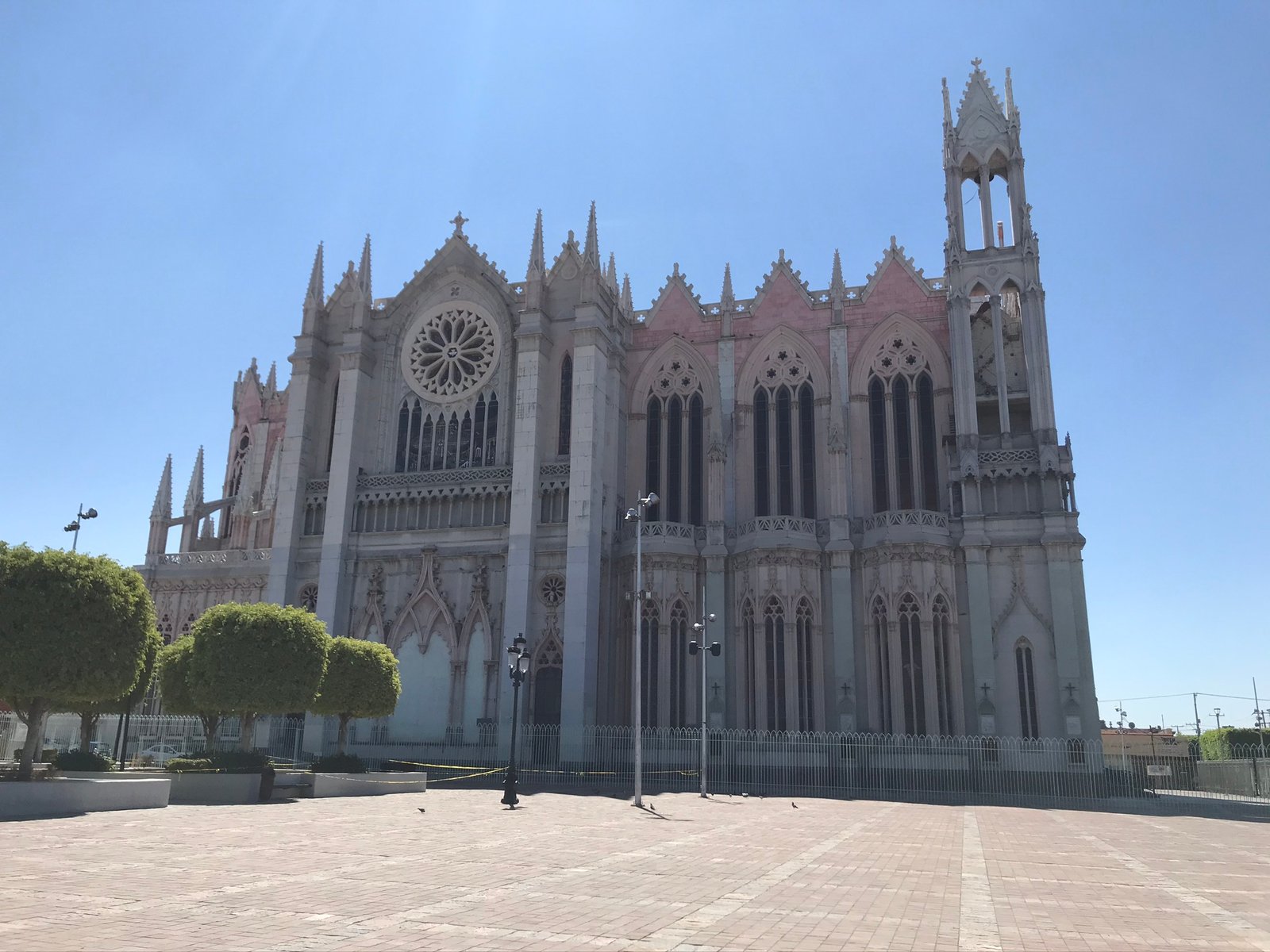
El Templo Expiatro in León, Guanajuato (outside).
Although my Spanish was still rudimentary, it was already paying dividends. Traveling in foreign countries is a completely different experience when you can speak the local language. It’s infinitely richer. I had only been in Mexico for a few months, and I was already reaping the benefits of my Spanish studies.
If you don’t speak the language, you are limited to connecting only with people who speak English – which is typically only a fraction of the population. When you speak the local language, you can connect with everyone. It opens doors that otherwise never would have opened and creates opportunities that you could never obtain otherwise.
Traveling in Mexico – Guanajuato
After spending a month in León, I moved to Guanajuato, Guanajuato – which was another place that my pilot friend suggested I visit. He was right. Guanajuato is magical.
Guanajuato has several defining features – the most noticeable being the European-style cobblestone roads lined by colorful buildings. The narrow alleys and colonial architecture make it feel like you are in Spain or Italy – except you are smack in the middle of Mexico. It’s like being transported through time and space.
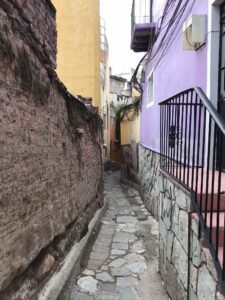
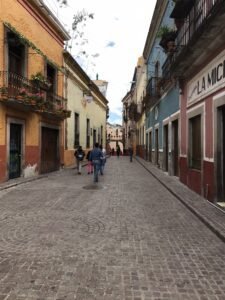
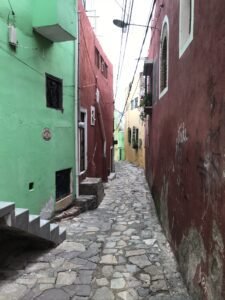
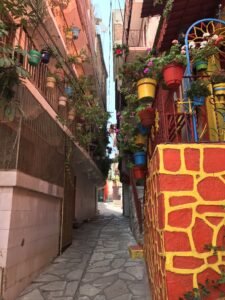
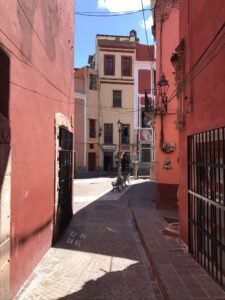
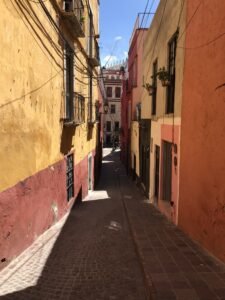
The Colorful Streets of Guanajuato.
I lived on the outskirts of town – intentionally – partially to avoid people (because of Covid) and partially to avoid inner-city noise (which by now I had realized is part of living in Mexico).
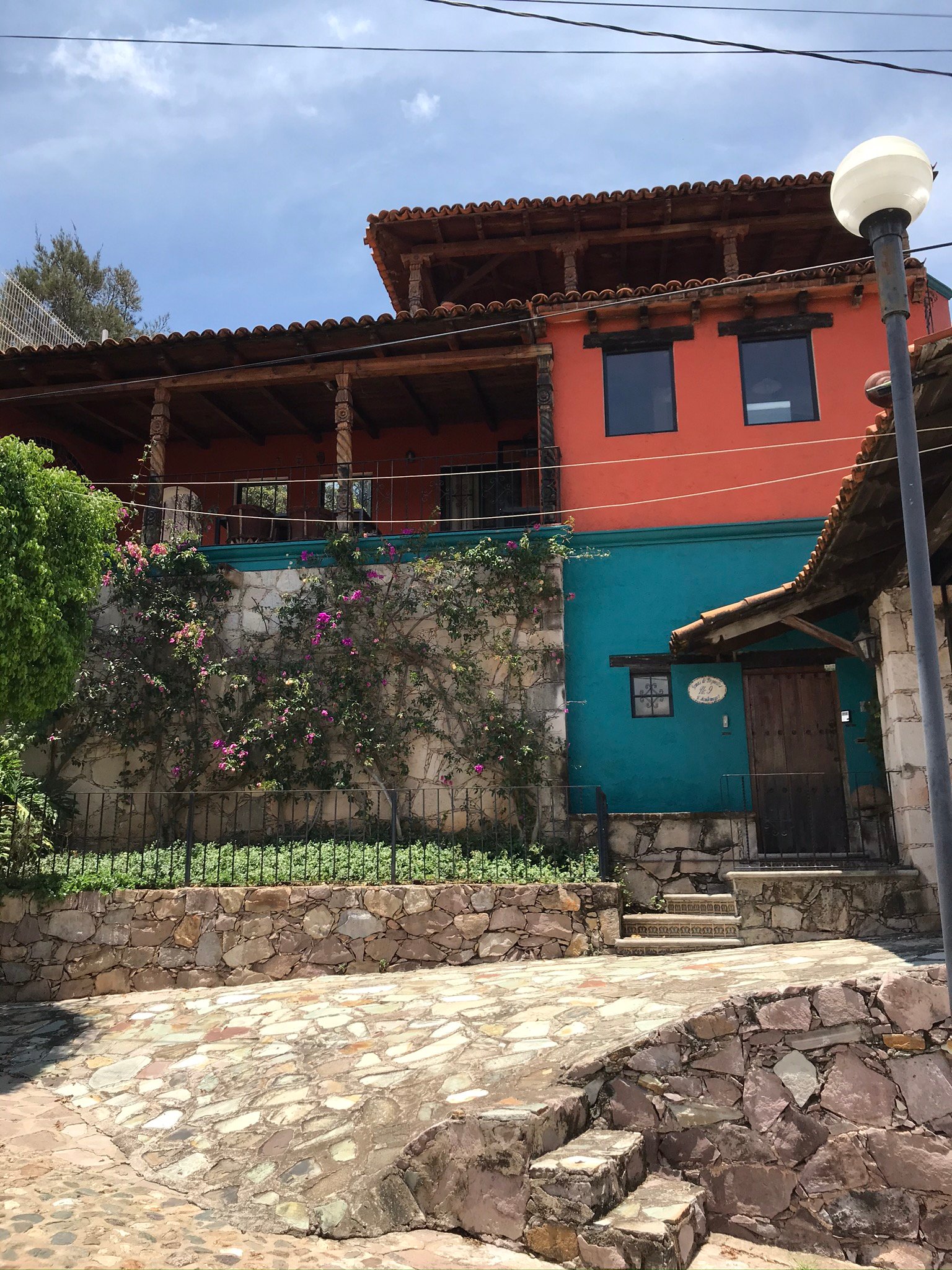
The outside of my house in Guanajuato.
Guanajuato has a rich culture and history, and it’s a popular tourist destination. However, there were practically no tourists when I was there because of the pandemic – which was a gift from the gods. I had the privilege of walking the city every day unbothered by the throngs of tourists who would have otherwise been there. It was a once-in-a-lifetime experience that no amount of money could purchase.
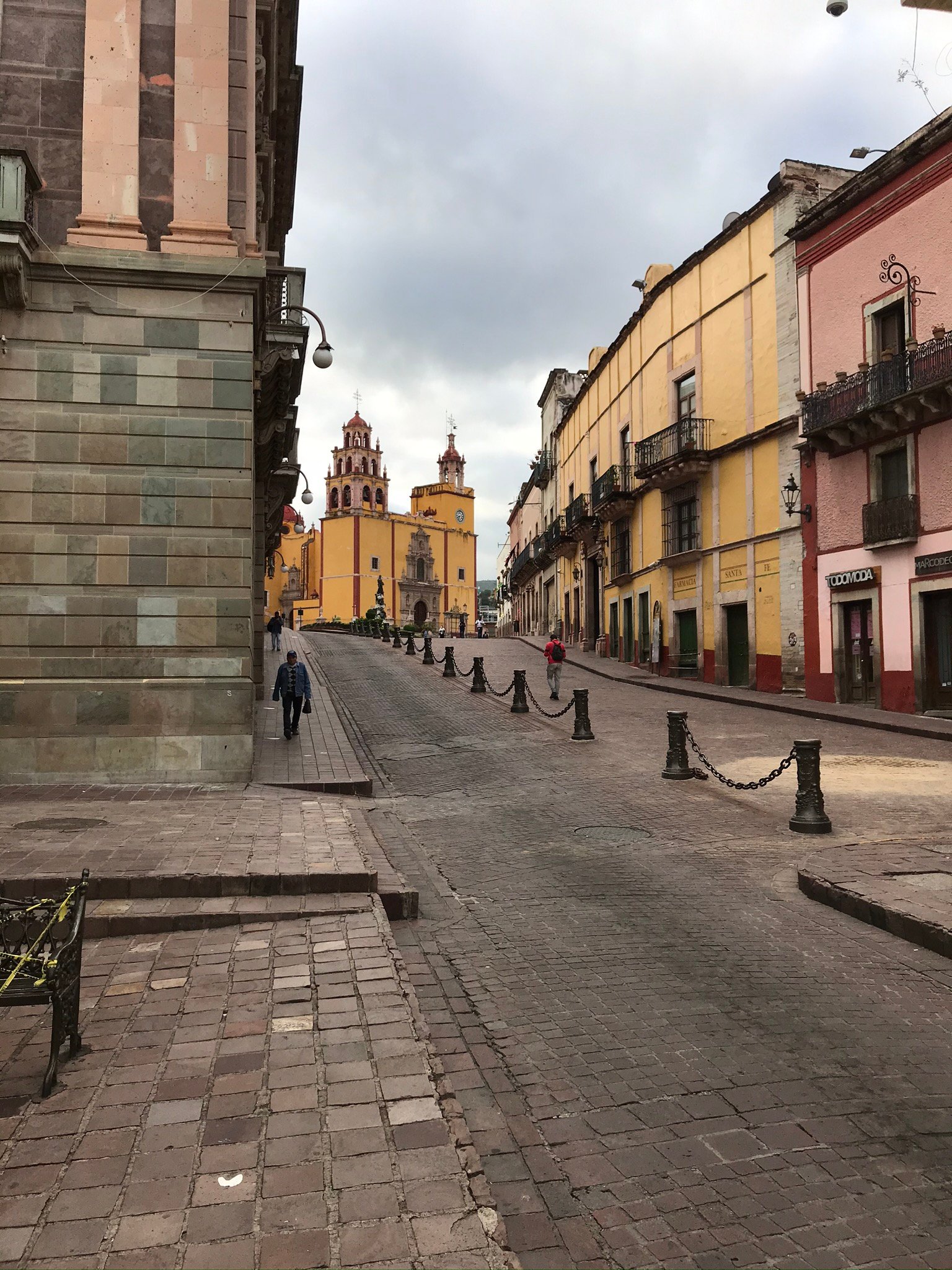
Basilica Guanajuato
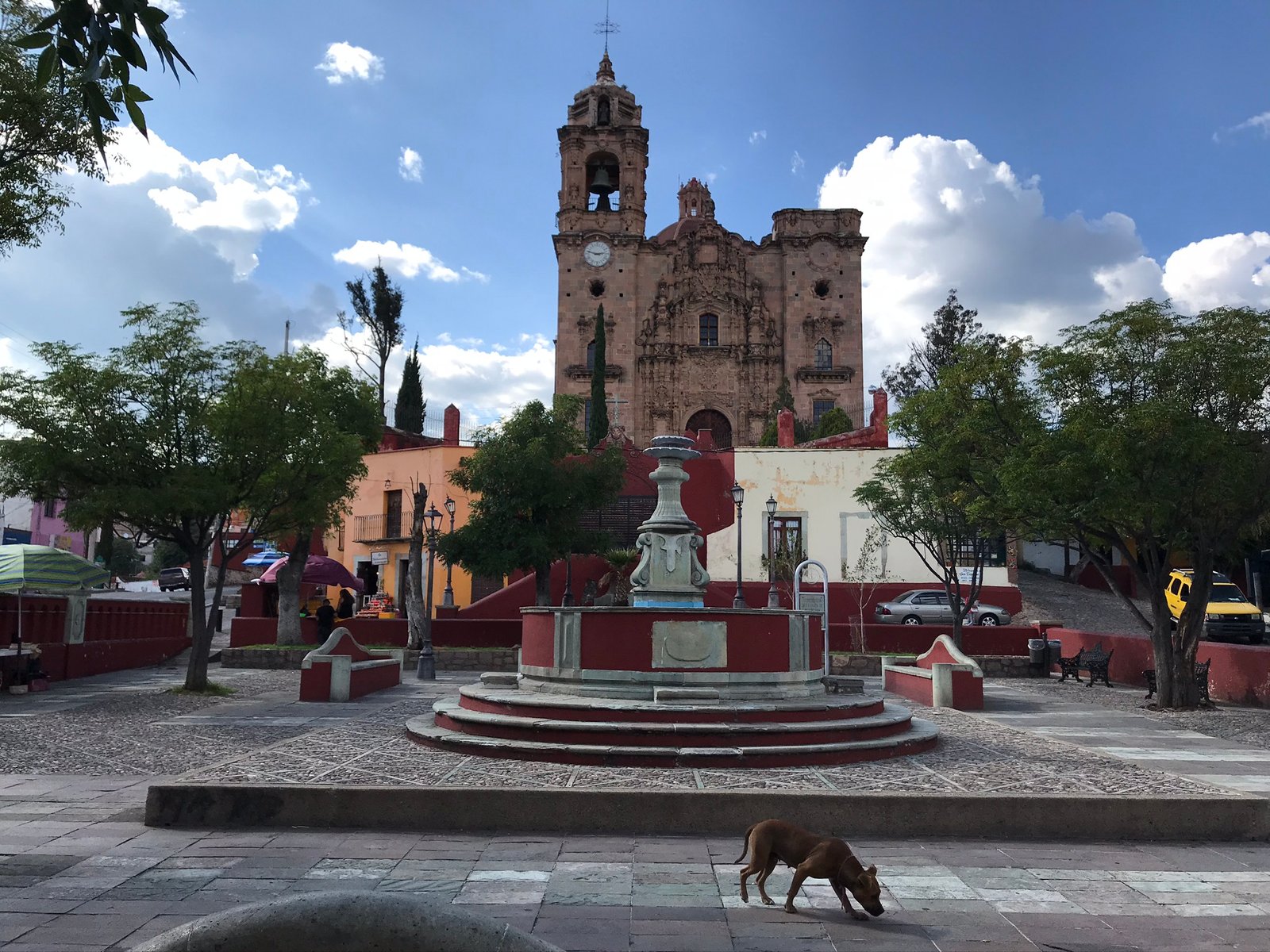
Templo La Valenciana
Aside from its enchanting streets, Guanajuato has other unique features – such as underground tunnels that were originally constructed in the 1800s to prevent flooding and for mining purposes. The city is set in a valley between scenic hills that offer spectacular views. The house I rented sat upon one of these hills, and the views were extraordinary.
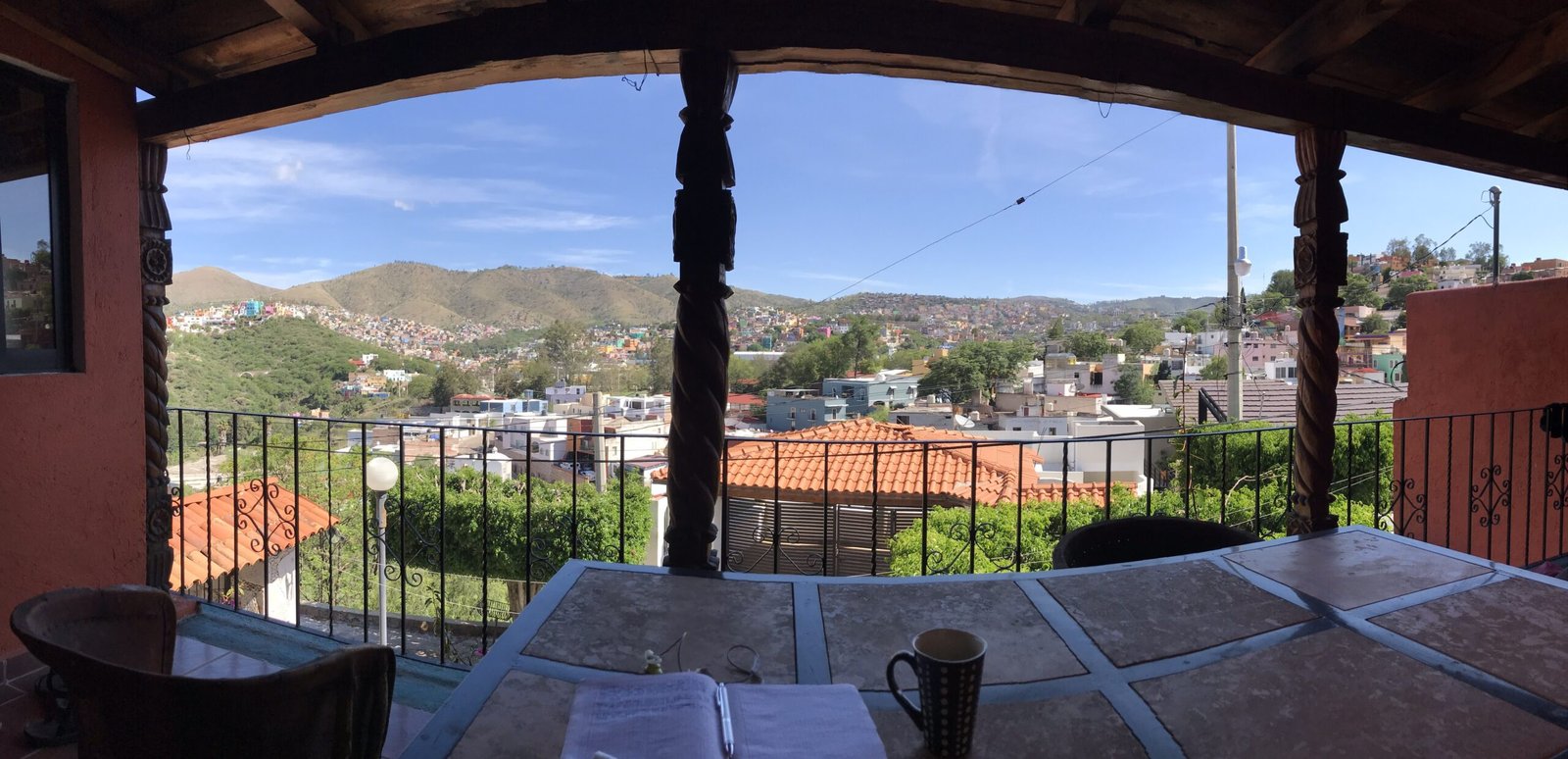
The View From My Balcony In Guanajuato.
Every day, I walked from my house in the hills, through the old mining tunnels, and into central Guanajuato to explore the city and work in the cafés. Given that it was devoid of tourists due to Covid, it was just me and the locals. Couldn’t have been better.
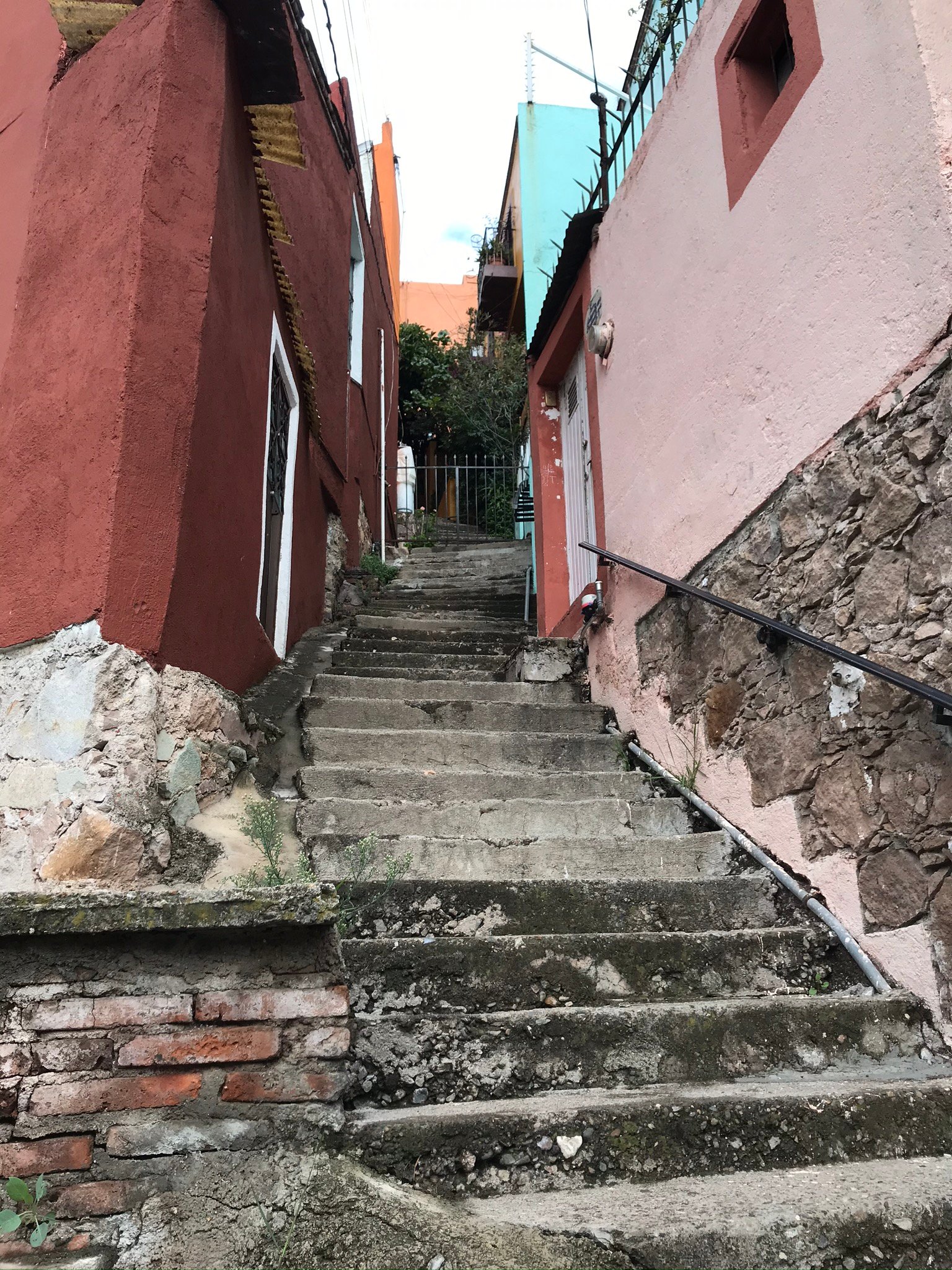
Many of the streets and paths in Guanajuato are narrow.
The only downside of visiting Guanajuato during the pandemic is that the museums – like the Museum of the Mummies – were closed. I love museums and would have loved to visit them, but the museums being closed was a small price to pay to have the city practically to myself. I could still visit many of the popular tourist destinations like the Pipila Monument, Calle del Beso, and the Basilica de Guanajuato.
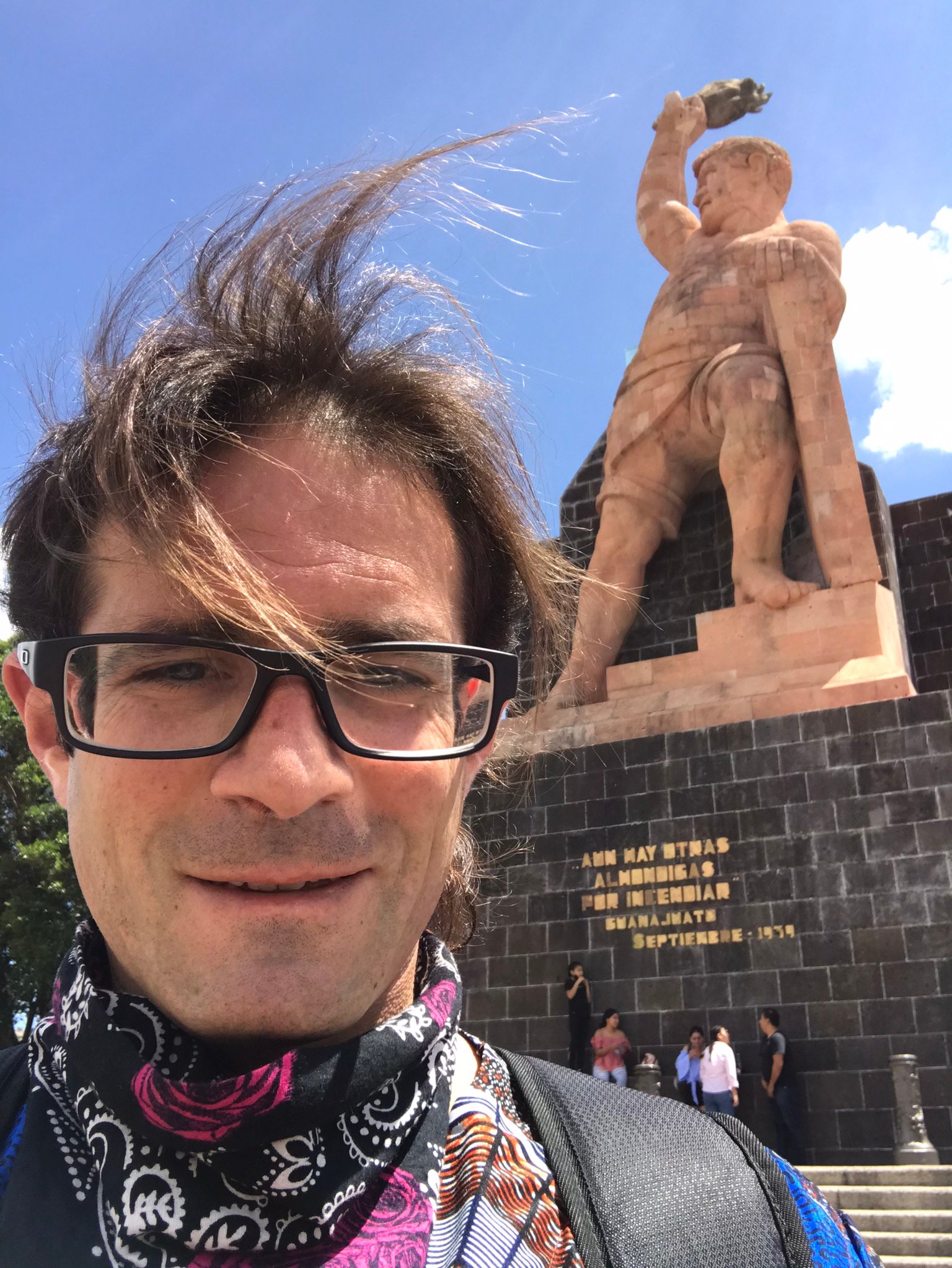
The El Pípila Monument in Guanajuato
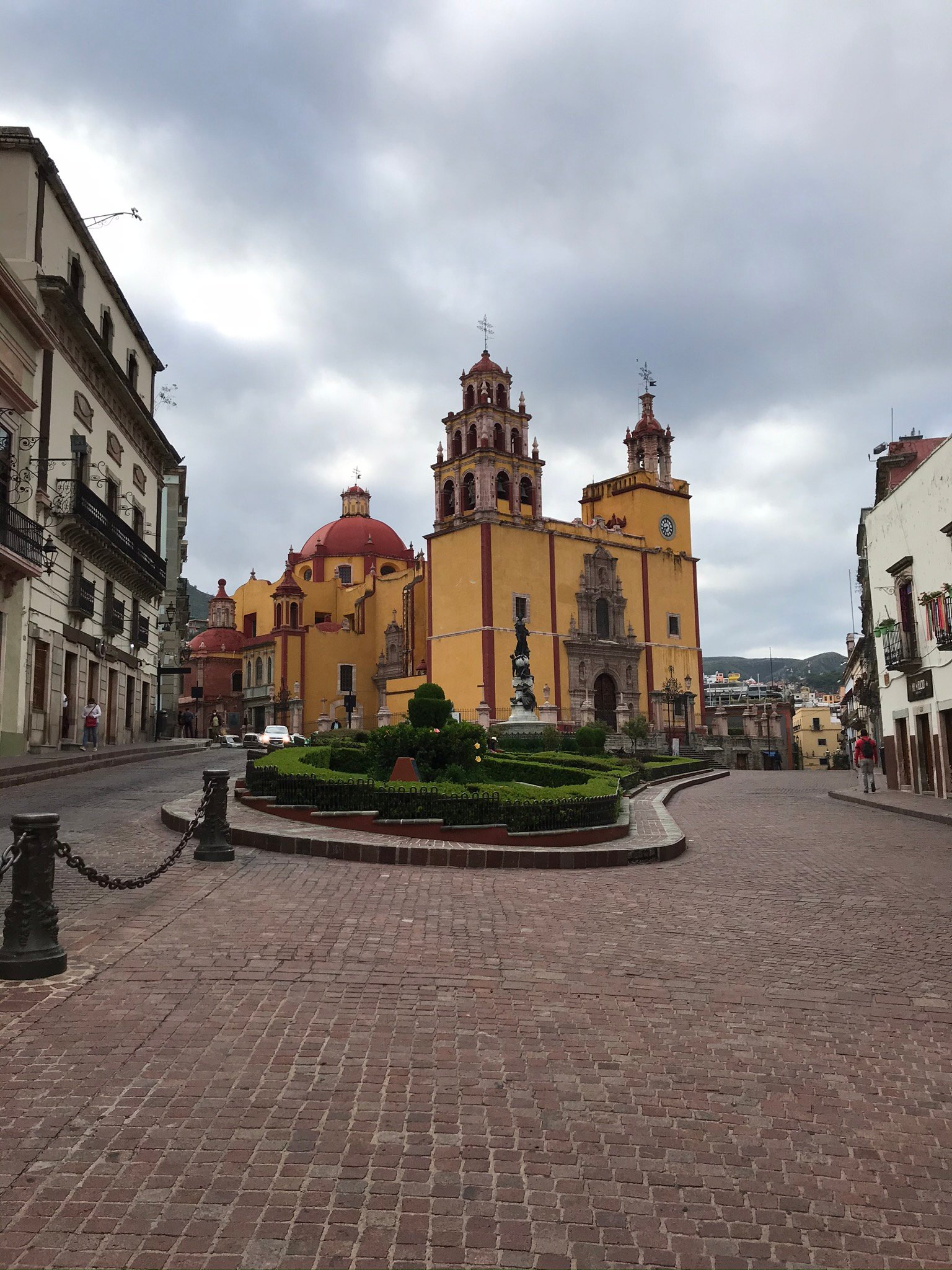
Basilica Guanajuato
Every day I studied Spanish, walked the city streets, and became more and more localized. Another benefit of not having tourists around is that there were few, if any, English speakers around. I had to use my Spanish for everything – this is one of the great benefits of immersion. If you want to learn a language – move to a country that speaks that language. There is no better way to learn.
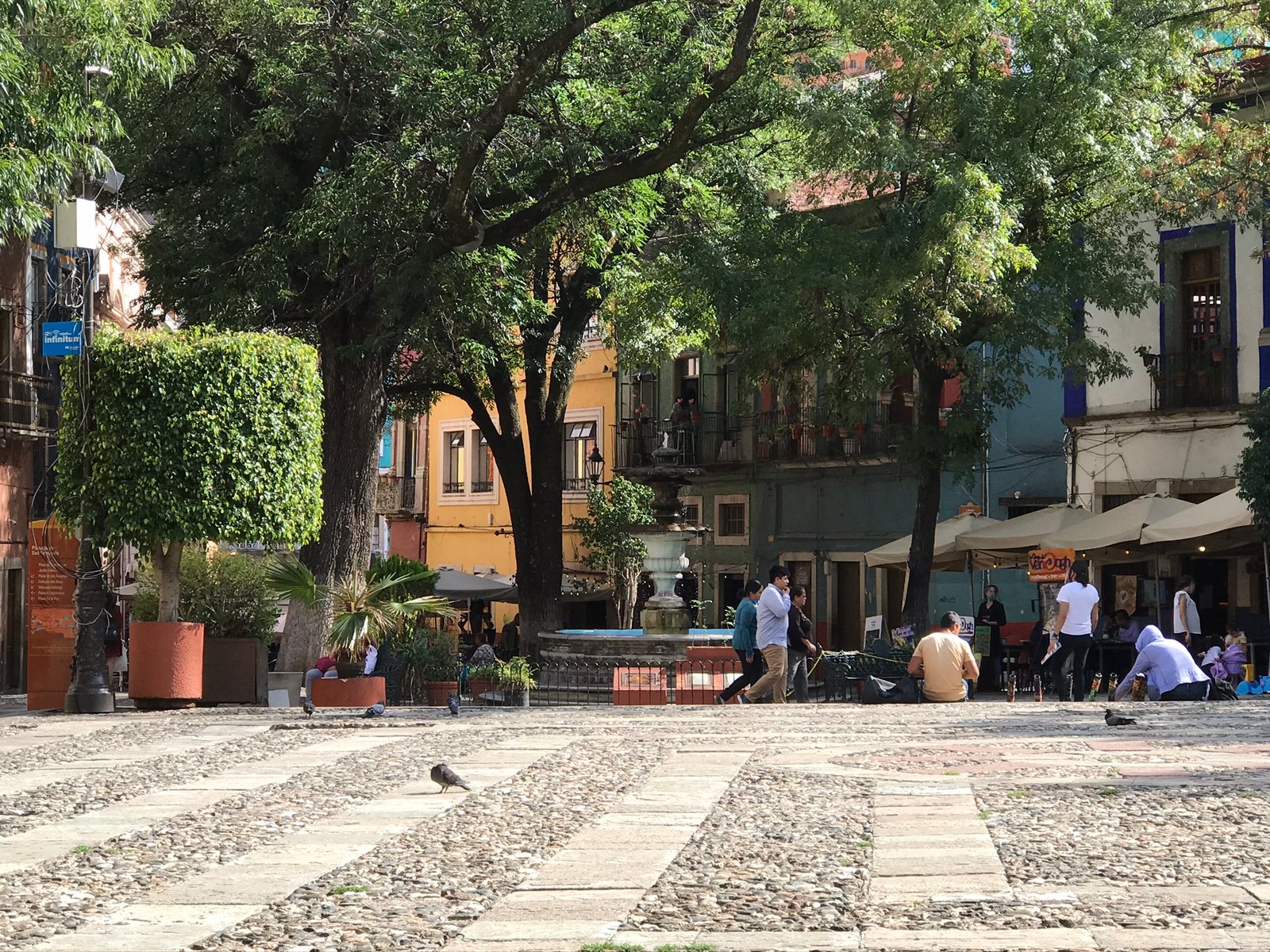
Plaza San Fernando – Guanajuato
However, simply moving to a country does not mean that you will just automatically learn the language by osmosis. You still have to study and practice – A LOT. Every day. There are people who have lived in Mexico for decades and still can’t speak a lick of Spanish. I don’t hang out with them.
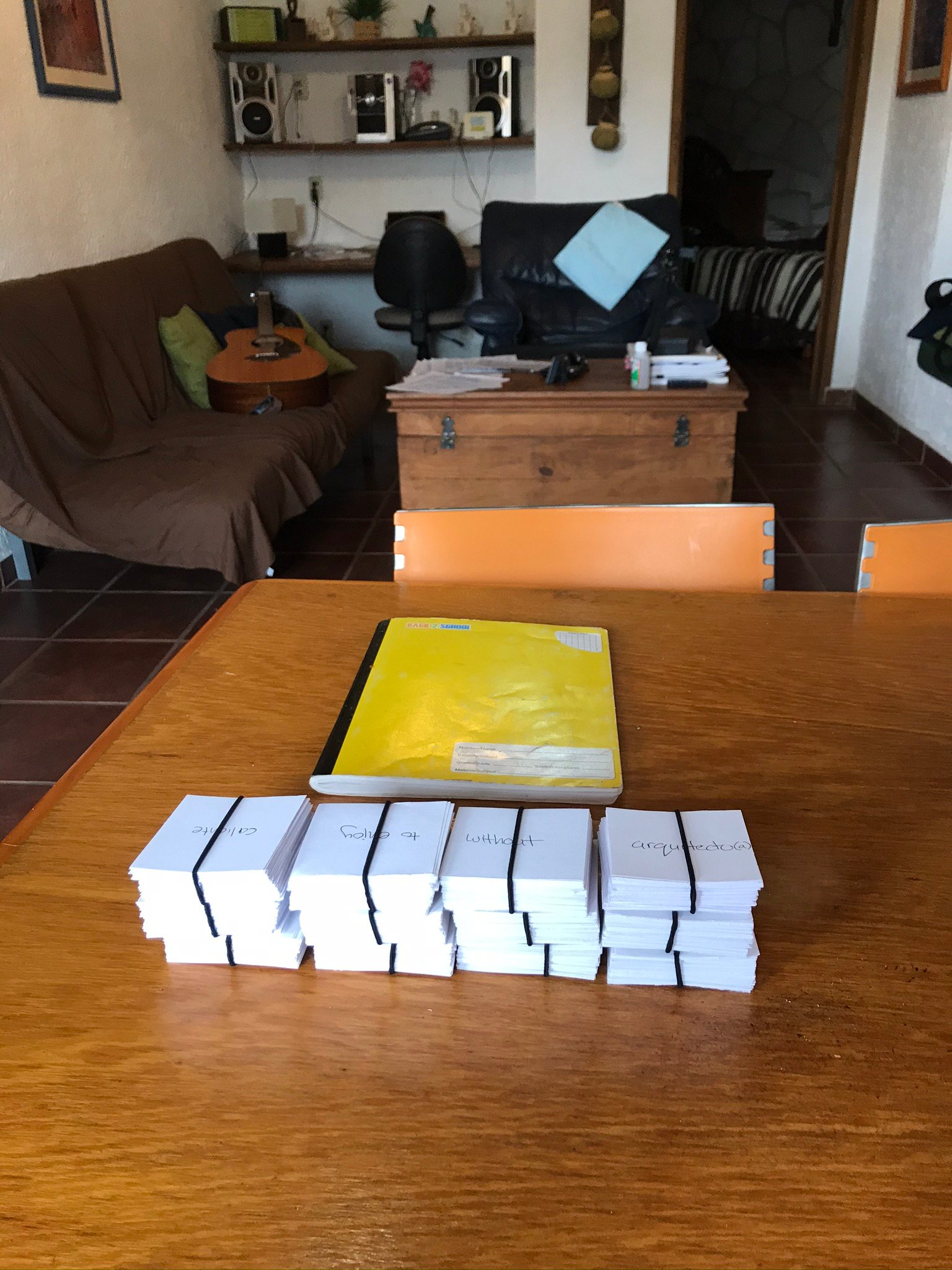
Stacks of flashcards in my house in Guanajuato
Simply moving to Mexico does not mean you will learn the language. You have to work at it – consistently – for a long time. But if you stay consistent and keep practicing every day, you will make gains, meet people, and opportunities will start to open up for you.
Traveling in Mexico – Aguascalientes
From Guanajuato, I moved to Aguascalientes – which is one of the smallest states in Mexico. It’s roughly 1.5 times the size of Rhode Island, to put things in perspective. I lived in the capital city, which is also called Aguascalientes.
Like in every city I visit, I spent a lot of time walking the streets. Aguascalientes has some beautiful cathedrals. You can find spectacular cathedrals throughout Mexico.
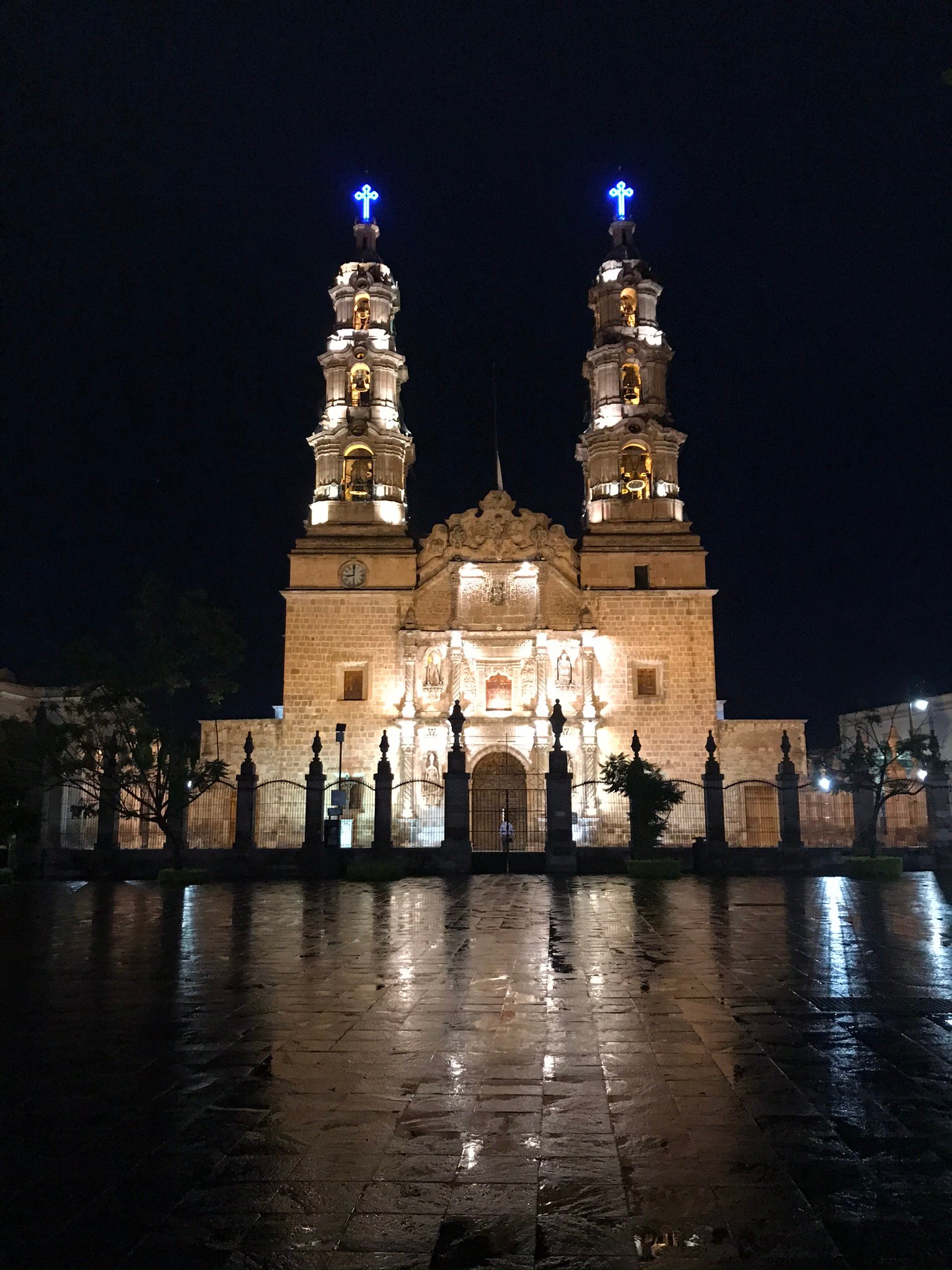
Plaza de la Patria at Night, Aguascalientes.
Aguascalientes also has several big parks, gardens, and grass areas. I lived next to one of the big parks and went there every day to work out. The park was my favorite part of Aguascalientes. It was right across the street from Three Centuries Square – which is an old train station that they turned into a train-themed museum and plaza.

Restored Train Car in Parque Tres Centurias.

Jardin del Encino in Aguascalientes
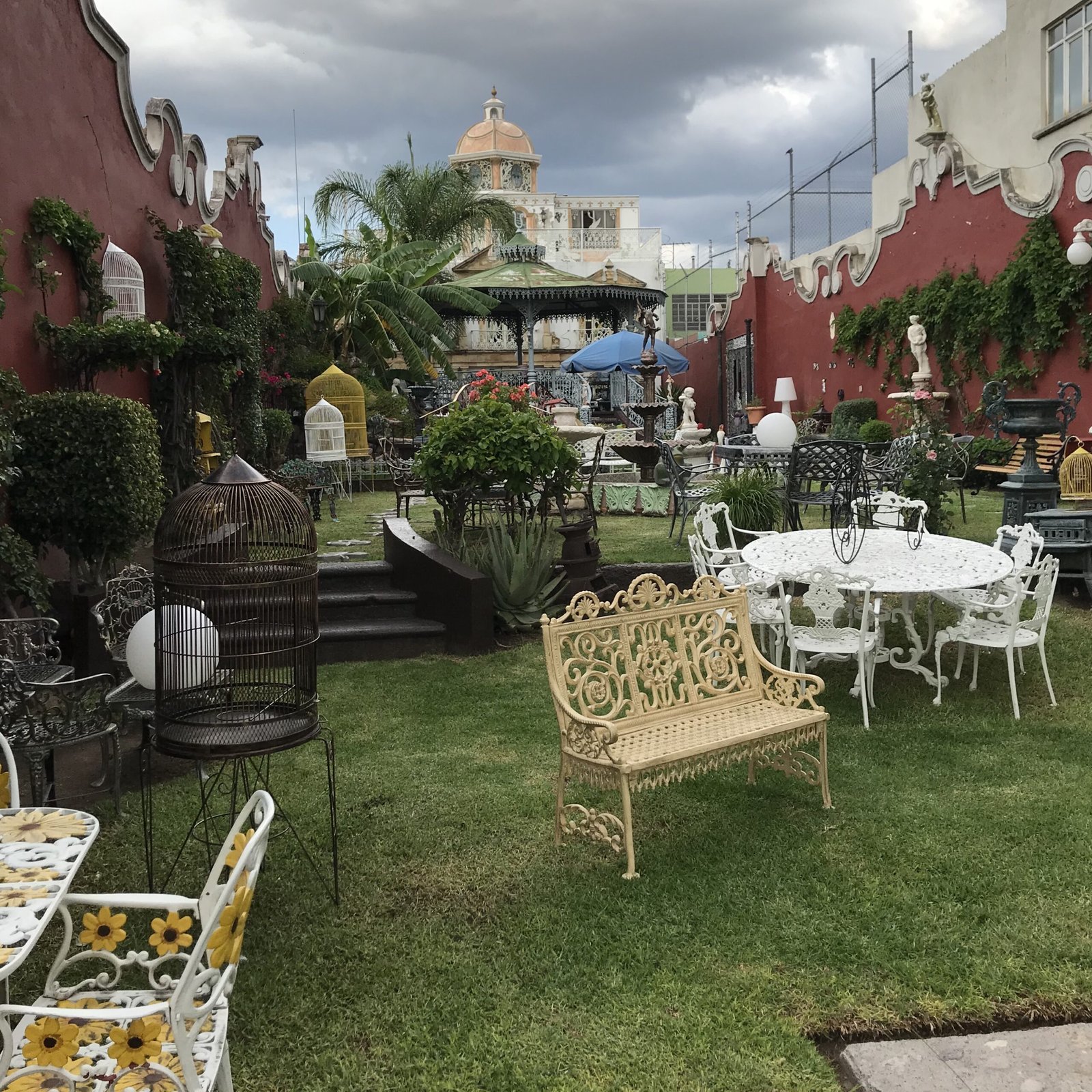
A cool garden in Aguascalientes. These are the things you discover by walking around.
Aguascalientes considers itself the capital of bullfighting. Bullfighting is banned in some Mexican states, but in Aguascalientes it is considered cultural heritage. There were no bullfights taking place when I was there because of the pandemic, but I still stopped by the Plaza de Toros bullfighting stadium. It’s the 4th largest bullfighting ring in Mexico. The plaza around it is enormous.
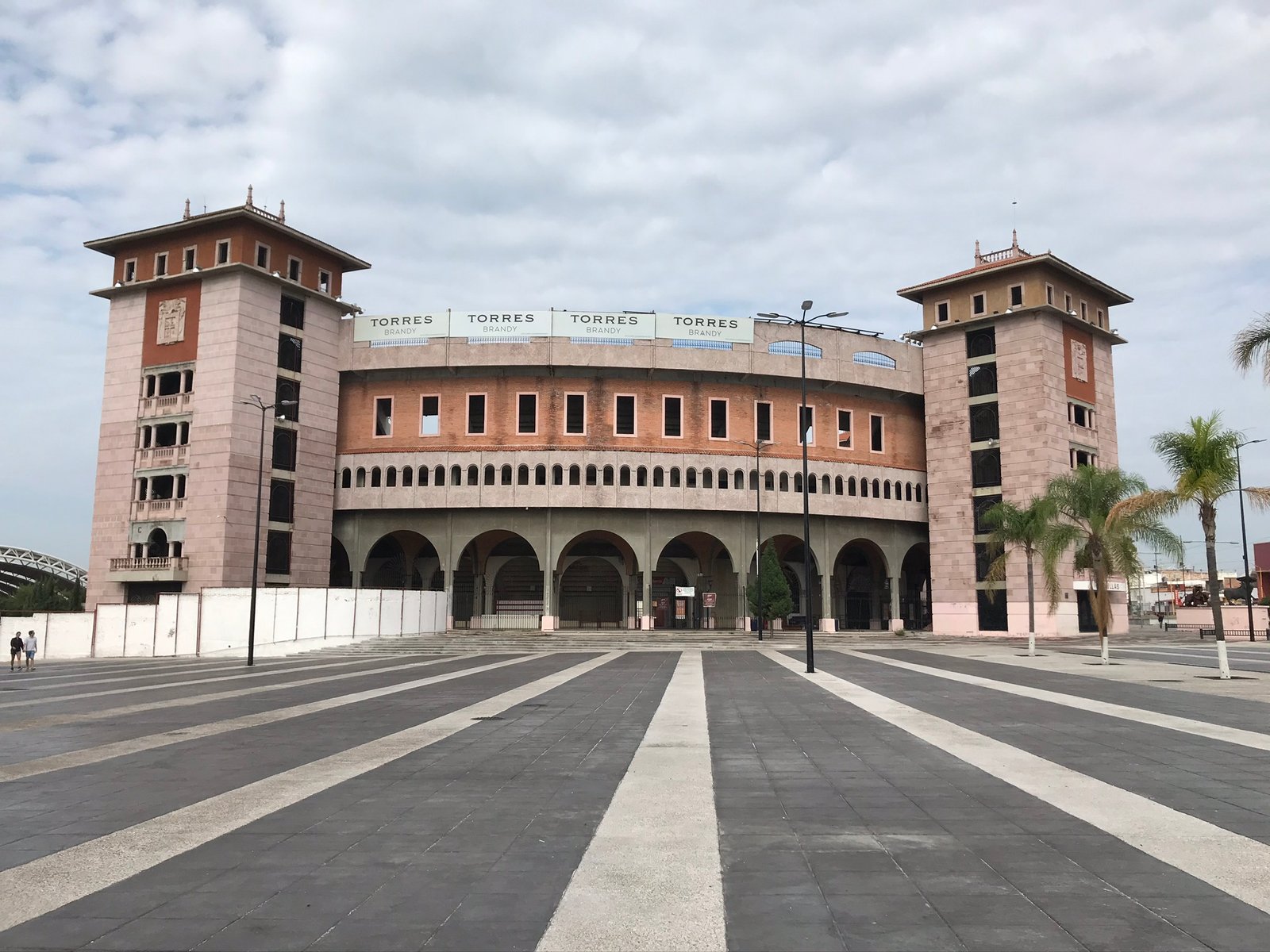
Plaza de Los Toros Bullfighting Stadium in Aguascalientes
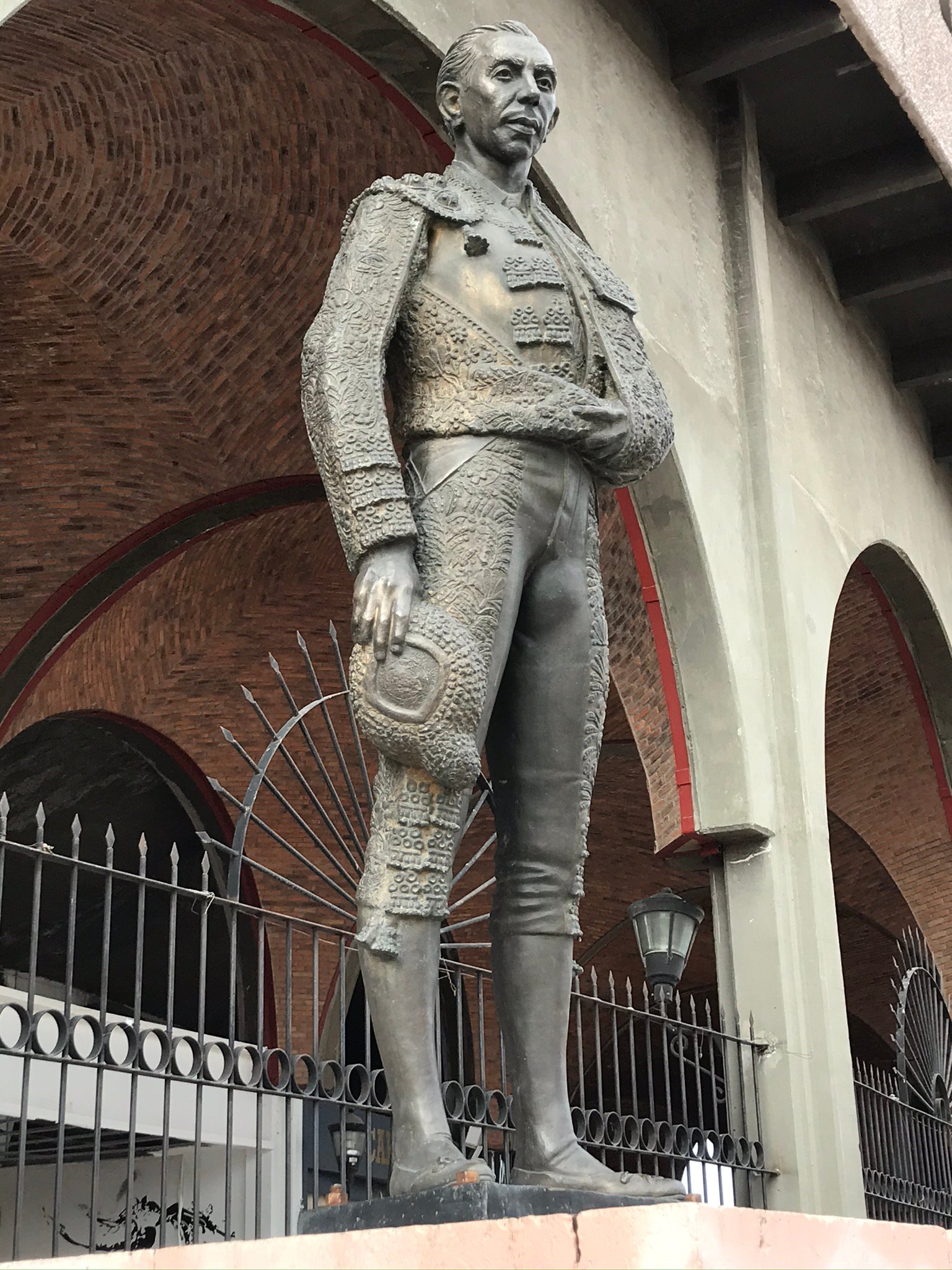
Bullfighter statue outside of Plaza de Los Toros. They just had to put big nuts on him, didn’t they. 😆
The owner of the apartment that I rented also owned a barbershop downstairs, so sometimes I would stop by and talk to him. Aside from that, I didn’t socialize too much while I was in Aguascalientes. I mostly walked around the city, worked out, worked on my computer, and studied Spanish.

Cool street art in Aguascalientes.
One day, I was talking to a friend from home on the phone, and we discussed meeting up somewhere in Mexico in one of the beach towns. Although our plans never materialized, the conversation made me realize how much I missed the beach, and soon I was researching Mexican beach towns to make my next move.
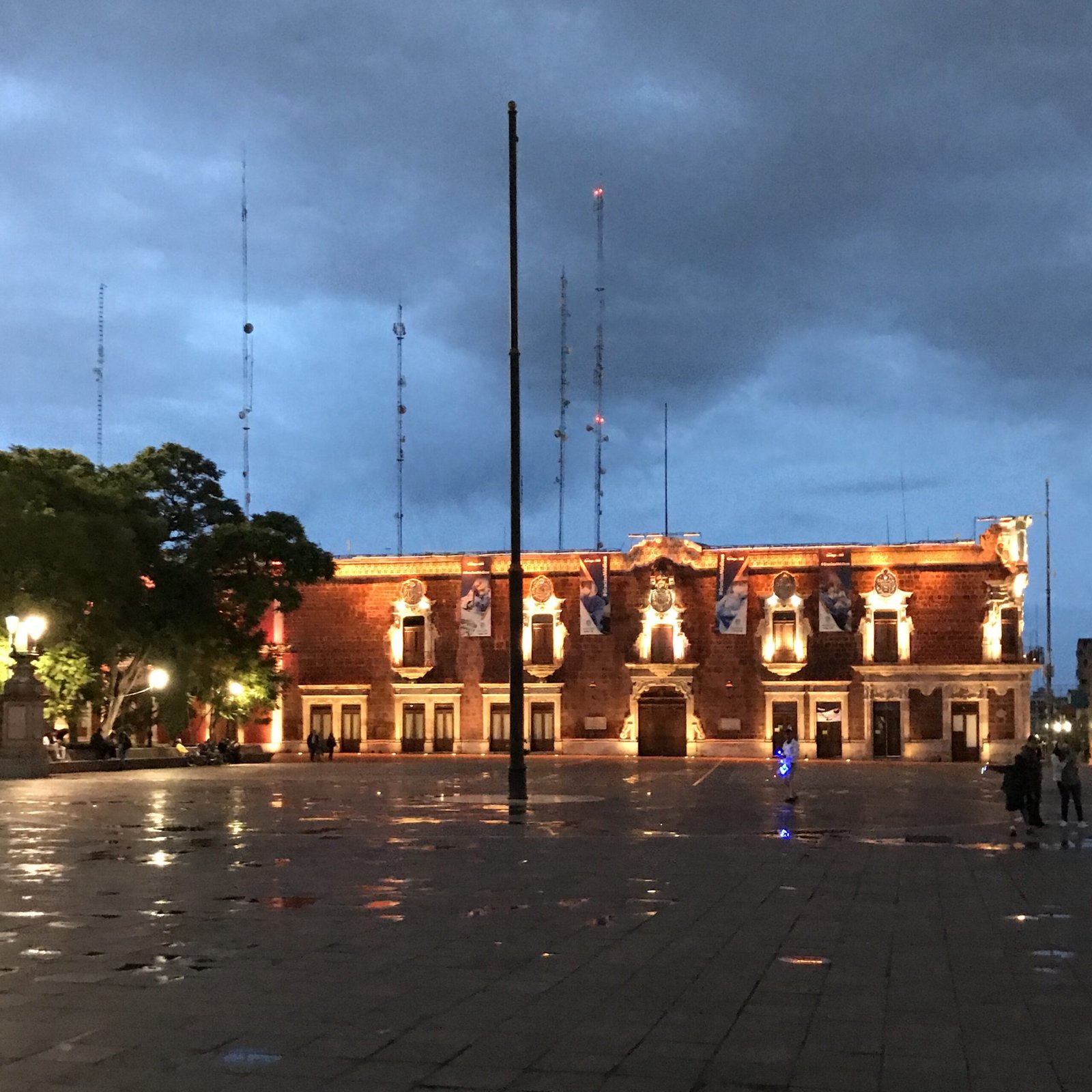
Plaza de la Patria lit up on a rainy evening
The two beach cities closest to Aguascalientes were Puerto Vallarta and a place called Manzanillo. Puerto Vallarta seemed too touristy. I didn’t want to move to a touristy place. I had never heard of Manzanillo, but there were some nice beaches there, and it didn’t look too touristy – so I decided to give it a shot.
Traveling in Mexico – Manzanillo
On the way to Manzanillo, I stopped in Guadalajara. Many people who live in Guadalajara vacation in Manzanillo during the holidays, but I didn’t know that at the time.
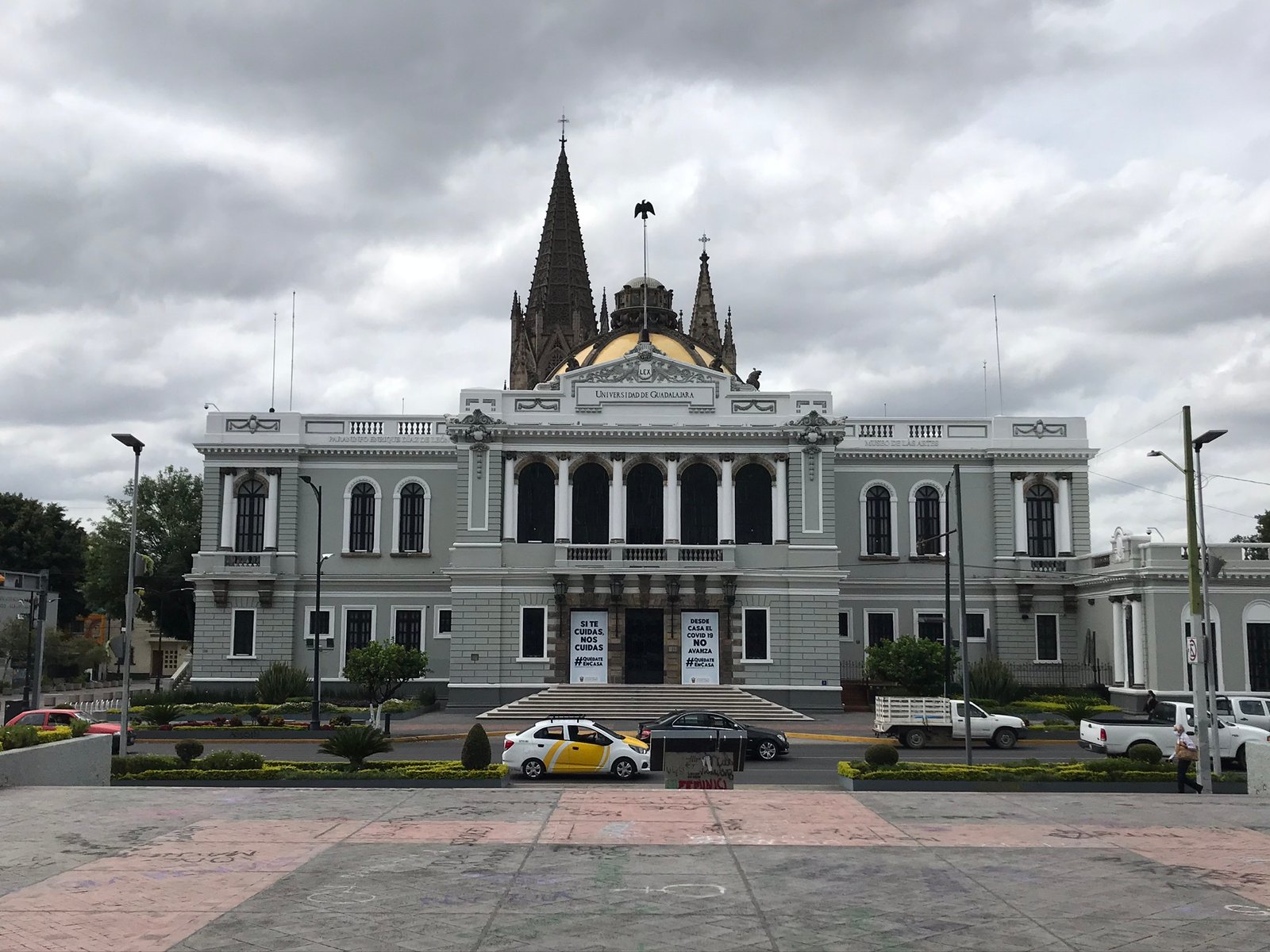
Universidad de Guadalajara
I only stayed in Guadalajara for a few days. Guadalajara is a big city and has all of the things you would expect to find in a big city. I took an Uber from Guadalajara to Manzanillo. The pandemic was still in full swing, and I was weary of getting Covid. It would have been a lot cheaper to take a tour bus.
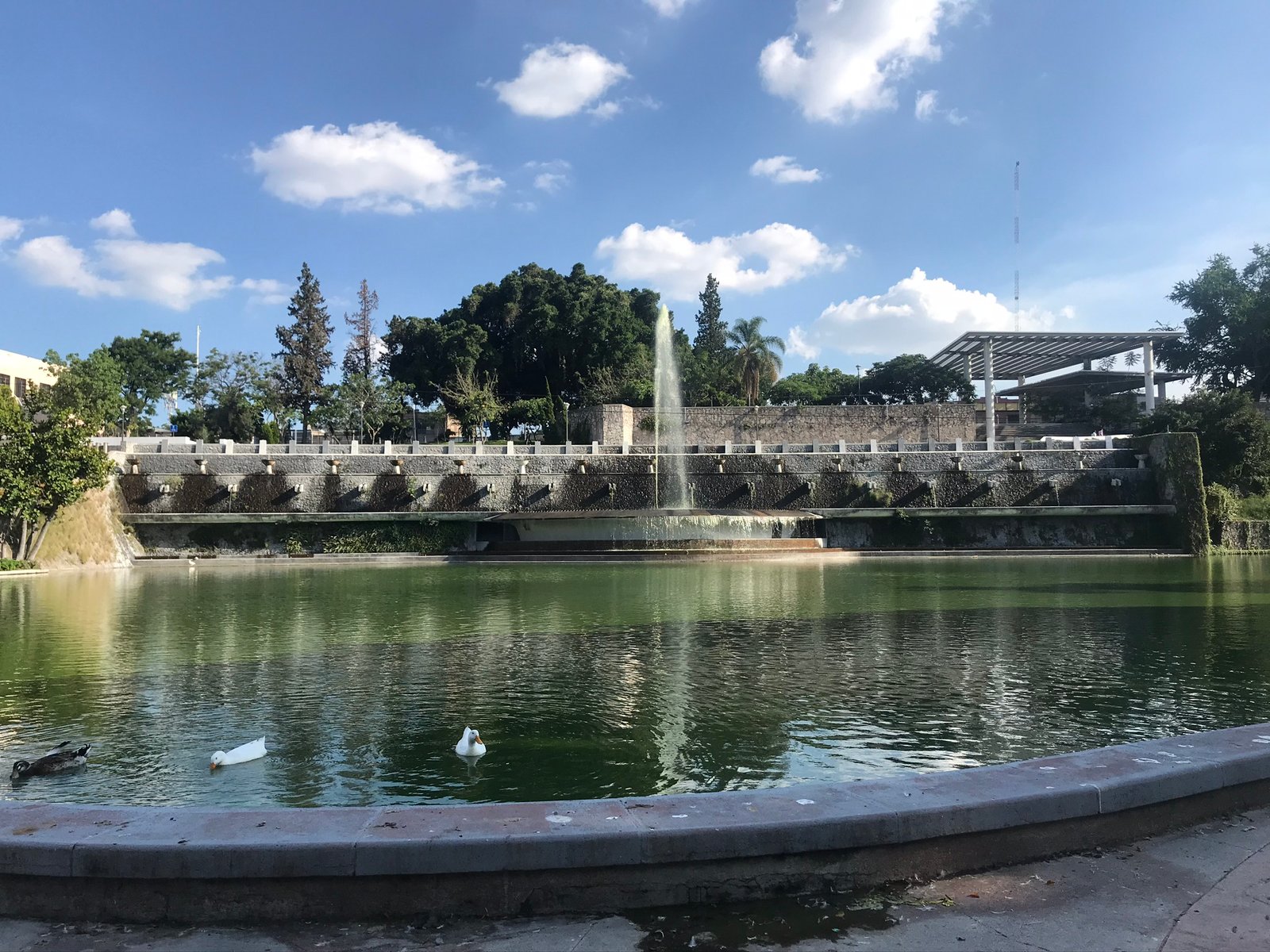
Parque Alcalde – Guadalajara, Jalisco.
Tour buses are a great way to travel in Mexico. But at the time, Ubers were relatively cheap due to the pandemic. So, I took an Uber from Guadalajara to Manzanillo – which seems ridiculous now, but it made sense to me at the time. Somehow, it actually wasn’t that expensive. Pandemic rates were different.
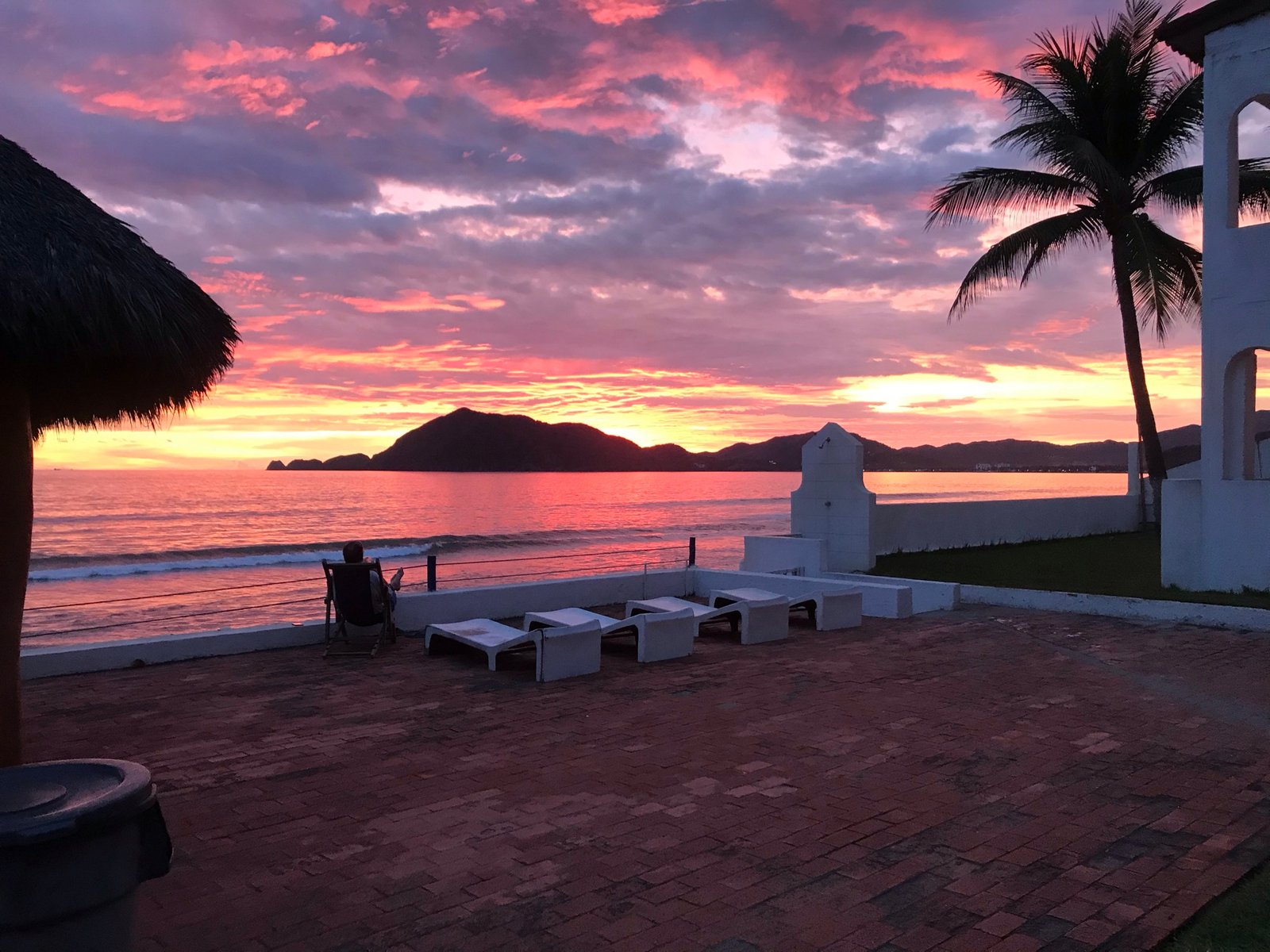
A sunset in Manzanillo.
When I got to Manzanillo is when my Spanish studies really started to pay off. For one, I was able to hire a surfing coach. My coach was a Spanish speaker, and I had developed just enough Spanish to be able to build a relationship with him. If I couldn’t speak Spanish, I never would have been able to work with my coach.
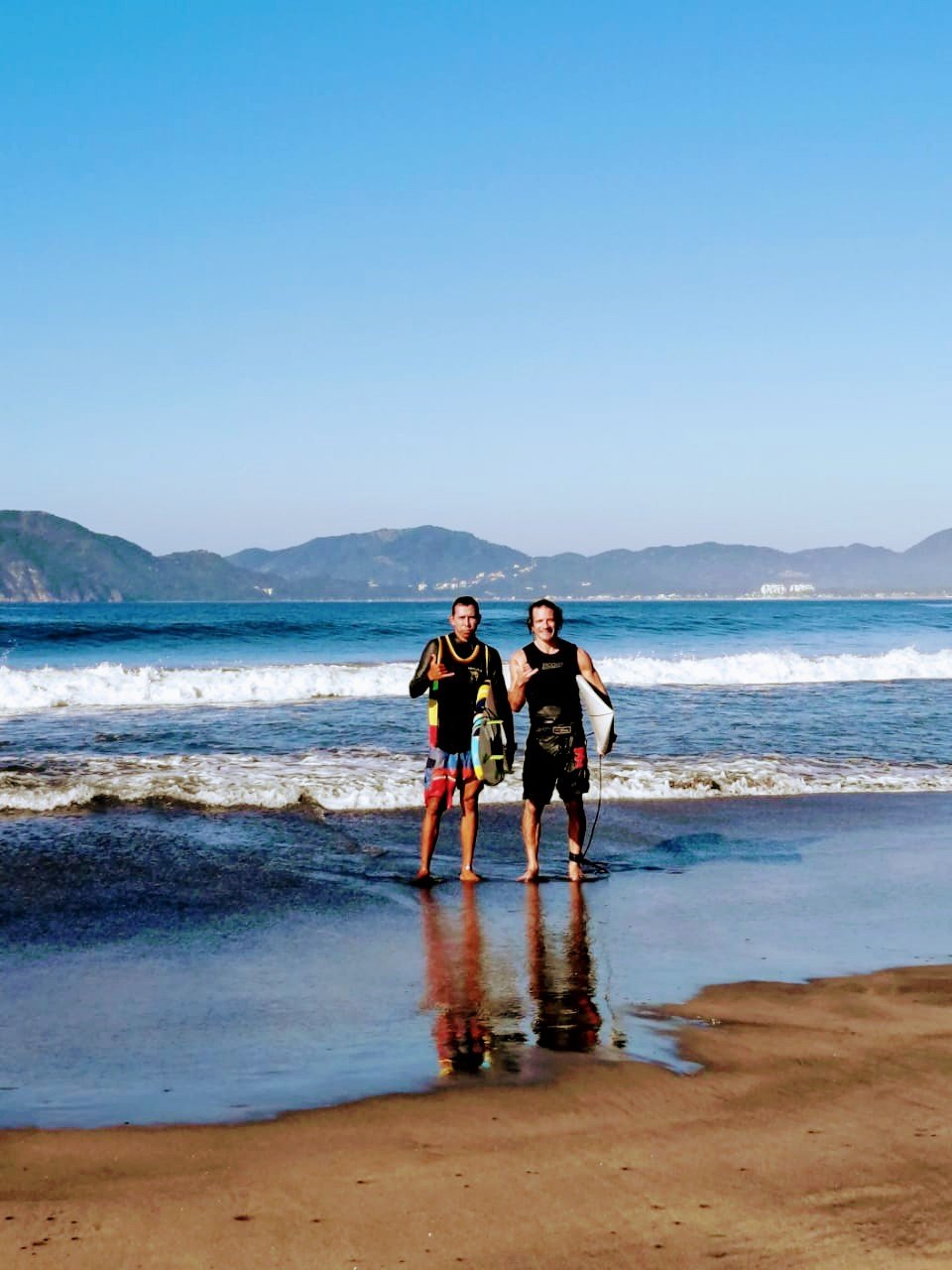
Me with my surfing coach, Roscoman.
My coach introduced me to several other surfers in the community, and thanks to those friendships I got invited on several surf trips. Those surf trips are some of my best memories from my time in Mexico, and they never would have happened if I couldn’t speak Spanish. The relationships I built in the surfing community made learning to surf an infinitely richer and more rewarding experience than it otherwise would have been.
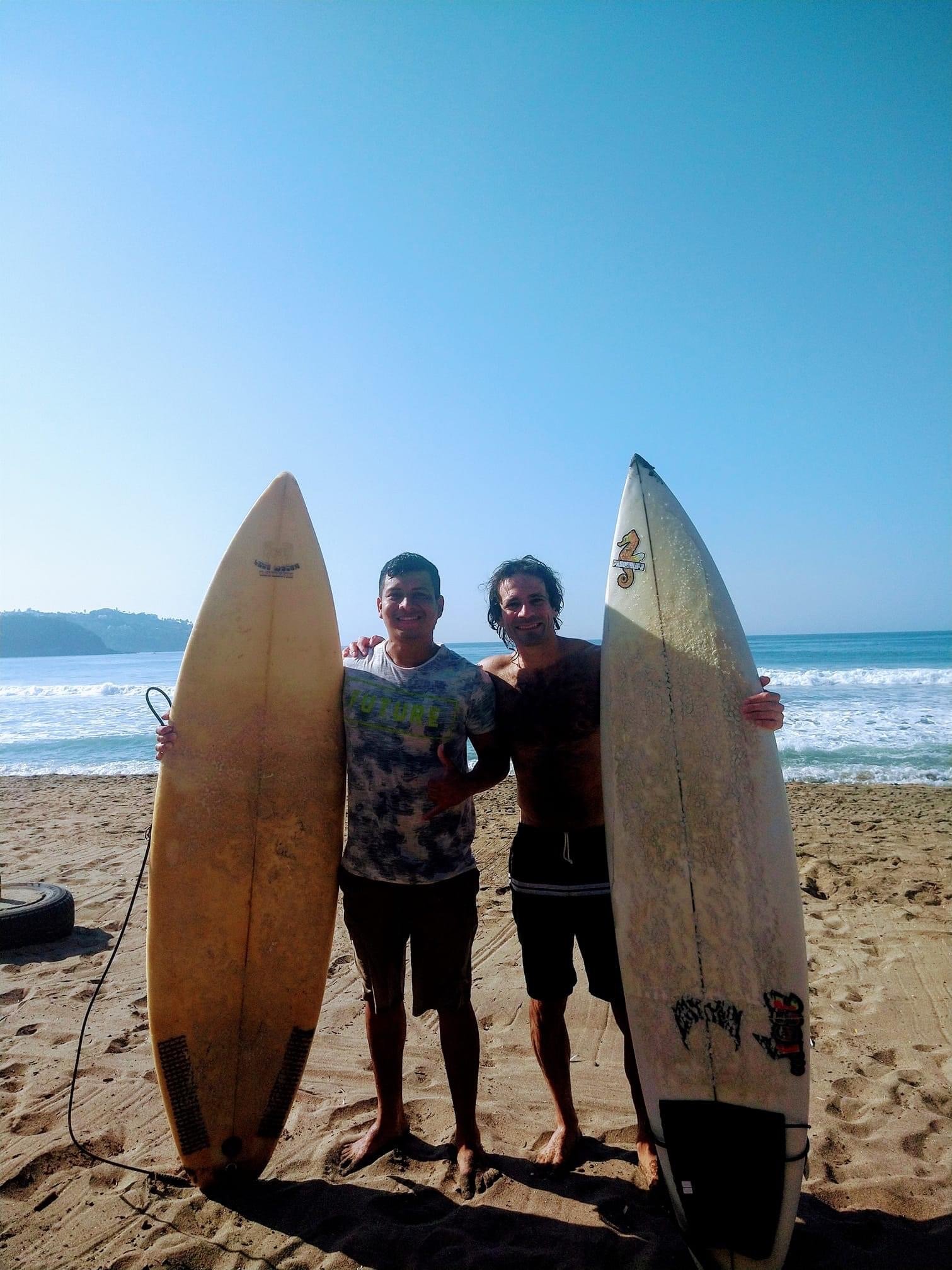
Miguel, one of my first friends in Manzanillo. We’ve surfed Olas Altas, Pascuales, Barra de Navidad, La Ticla, Ranchito, and other spots together.
I made friends outside the surfing community as well. One of my first friends was Diana, who owned the café down the street from my house. I used to go into the café to work on my laptop. I liked it better than working at home because it was more social. I got to talk to Diana and some of the other people who visited the café.
Diana is brilliant – she speaks at least five languages (Spanish, English, Russian, French, and Dutch). Those are only the languages that I have heard her speak. She might speak more than that.
Diana is fluent in English, but I always did my best to talk with her in Spanish 1) because we were in Mexico, and 2) it was great practice to work with someone who spoke both English and Spanish at a high level.
One day, I mentioned to Diana that I wished I had more people to practice Spanish with. She suggested that we start a language club. I agreed that it was a great idea, so I went home and drew a poster by hand. Then I brought the poster back to the café, and we hung it on the window. Just like that, our language club was born.
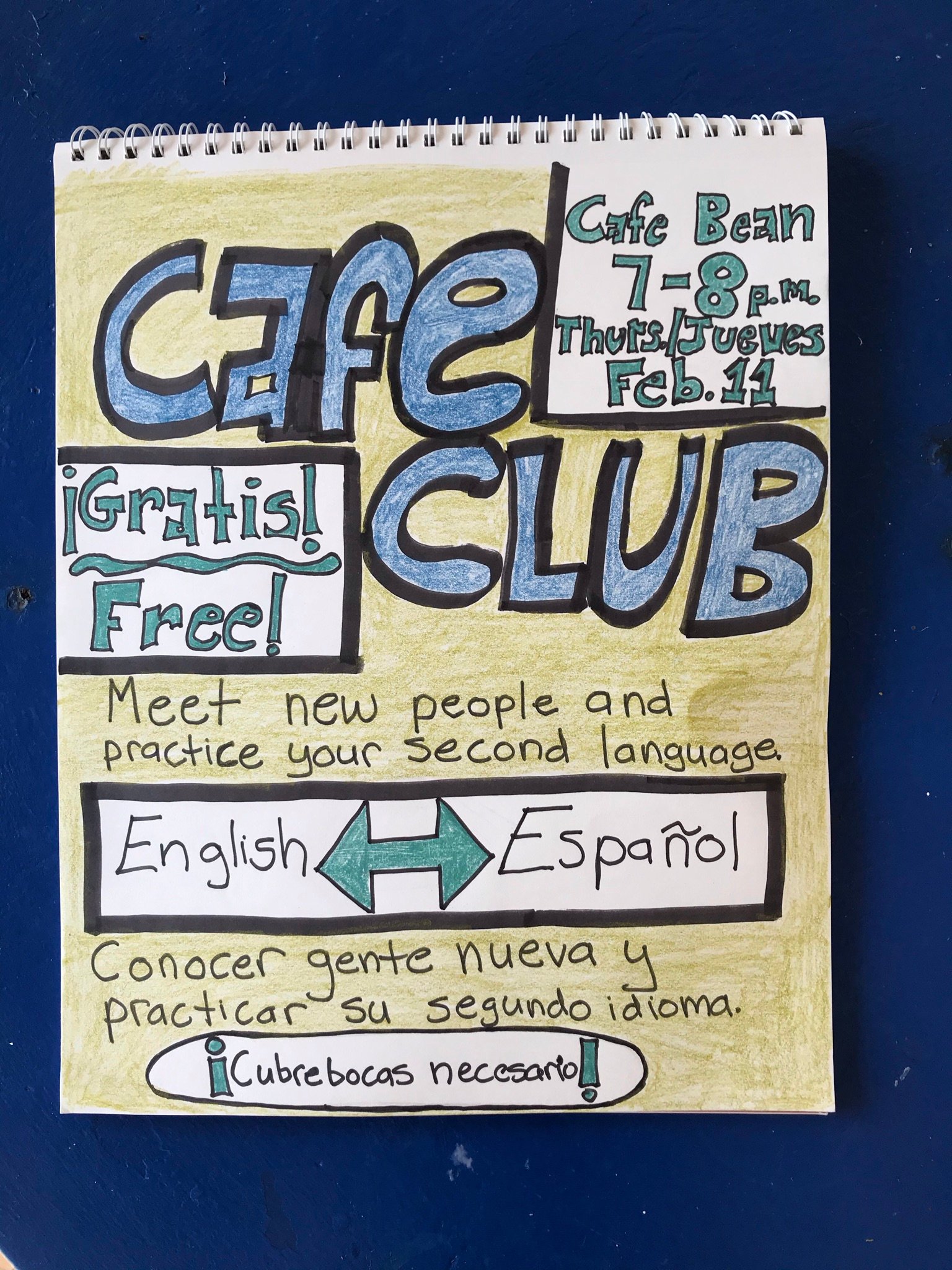
The actual Cafe Club poster that I drew by hand. We put it on the front wall of the cafe.
Growing Roots in Manzanillo
I didn’t know it at the time, but starting the language club was probably the best thing I’ve ever done in my life. The idea was that we would mix locals who are learning English with foreigners who are learning Spanish, and help each other.
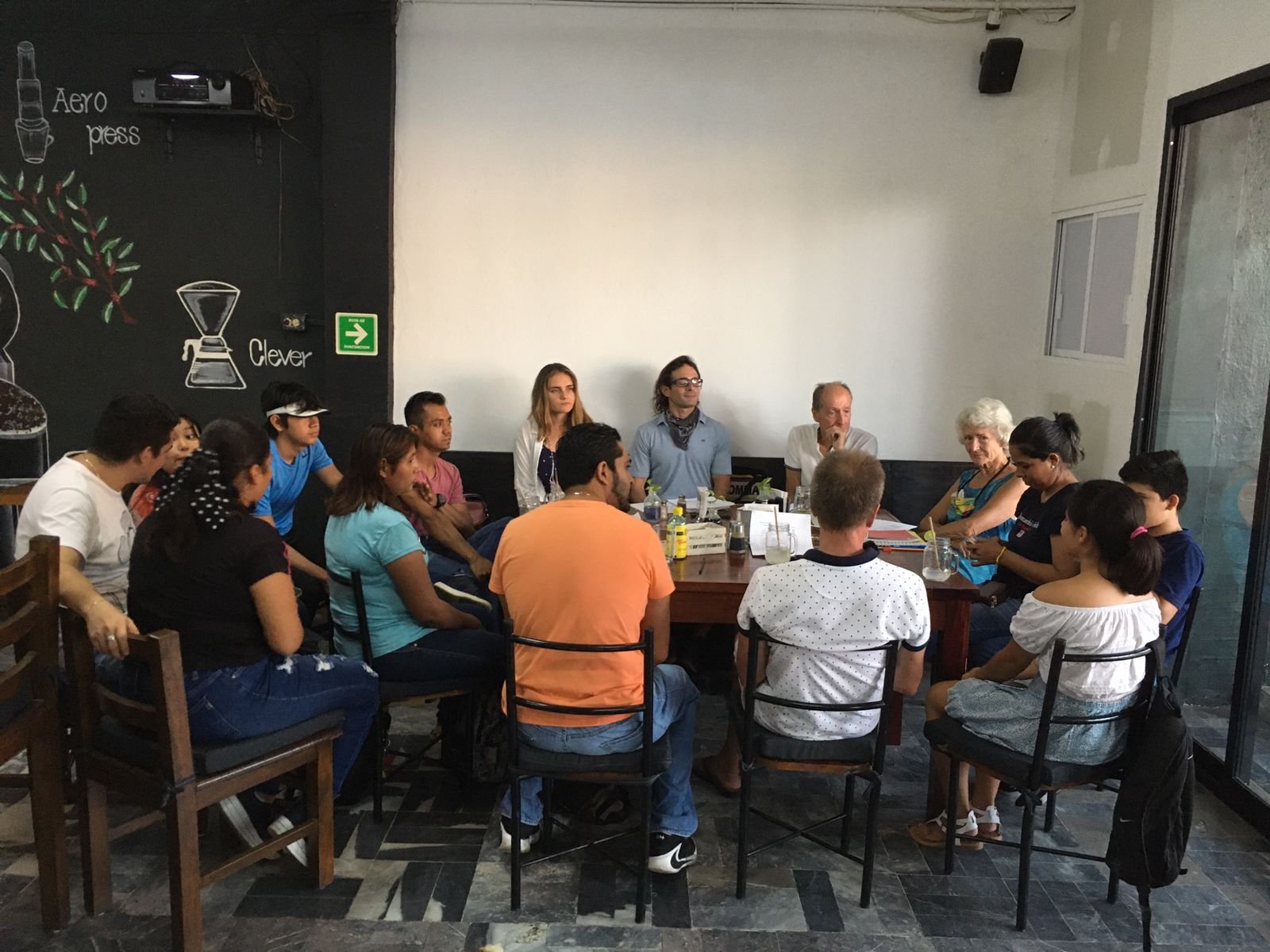
Tuesday Language Group at Café Bean.
The format was simple. Each week I would prepare 3-4 questions or conversation topics, and everyone in the group would have the chance to answer them in their second language. The format worked amazingly.
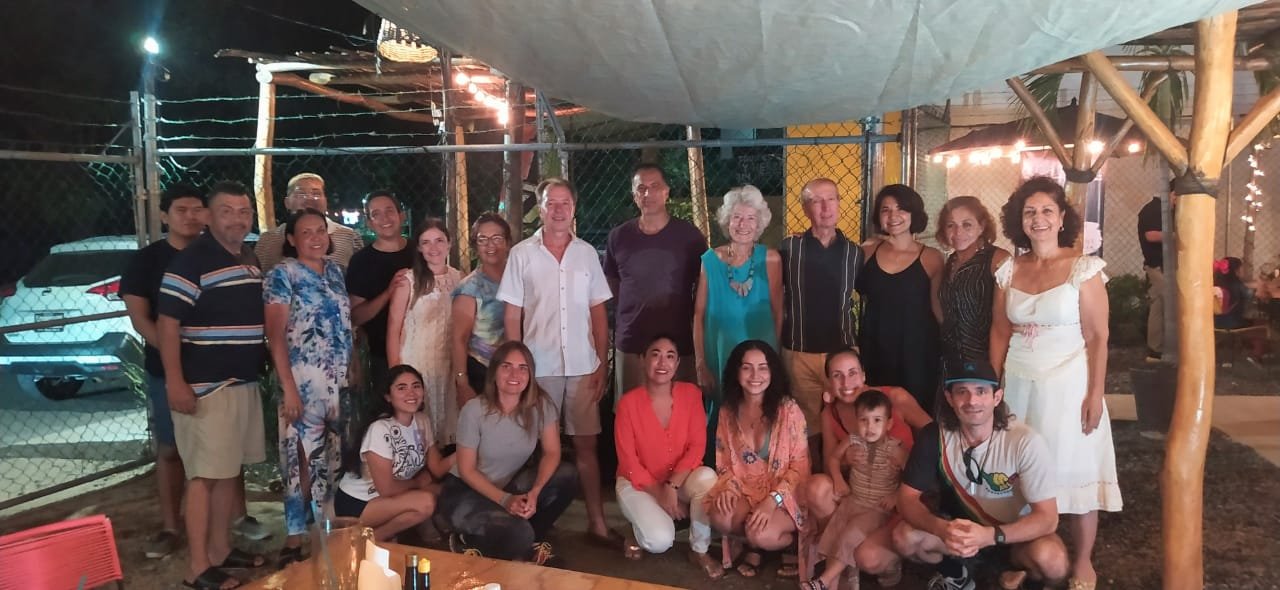
Tuesday Language Group at a pizza restaurant.
The first week, several people showed up – a mix of local Spanish speakers and foreign English speakers. It was great because not only did we get to practice our second language, we became friends. Since the first week was such a success, we decided to keep it going for the next week. And the next week. And the next.
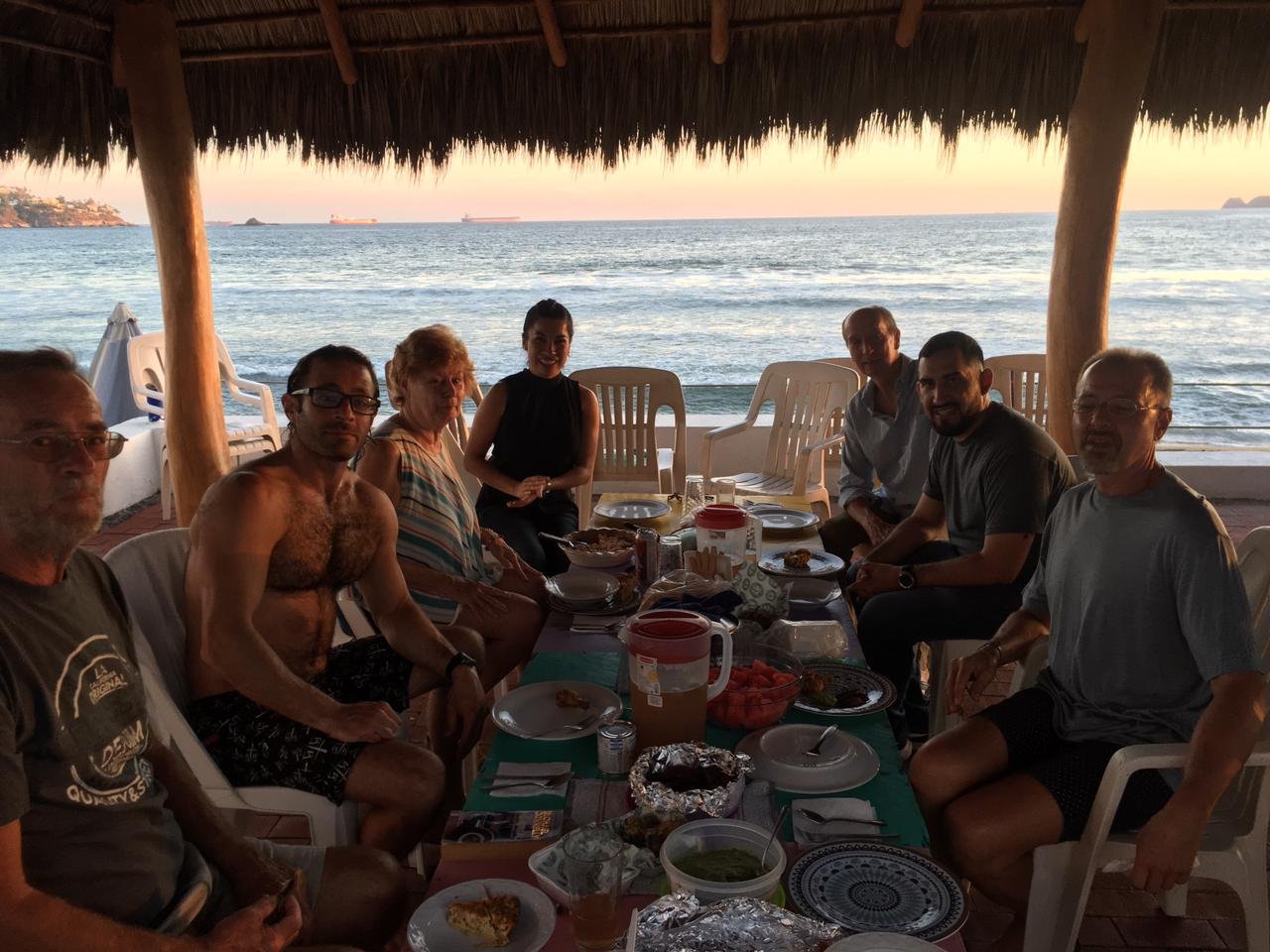
Tuesday Language Group at the beach.
To my surprise, people kept showing up. I told myself that I would keep showing up to the group as long as I wasn’t the only one. Never once was I the only person who came. Every week, people kept showing. Some weeks, there would be as many as 15 people. Other weeks, we would only have 4 or 5. But every week people showed up, and every week each of us learned something new.
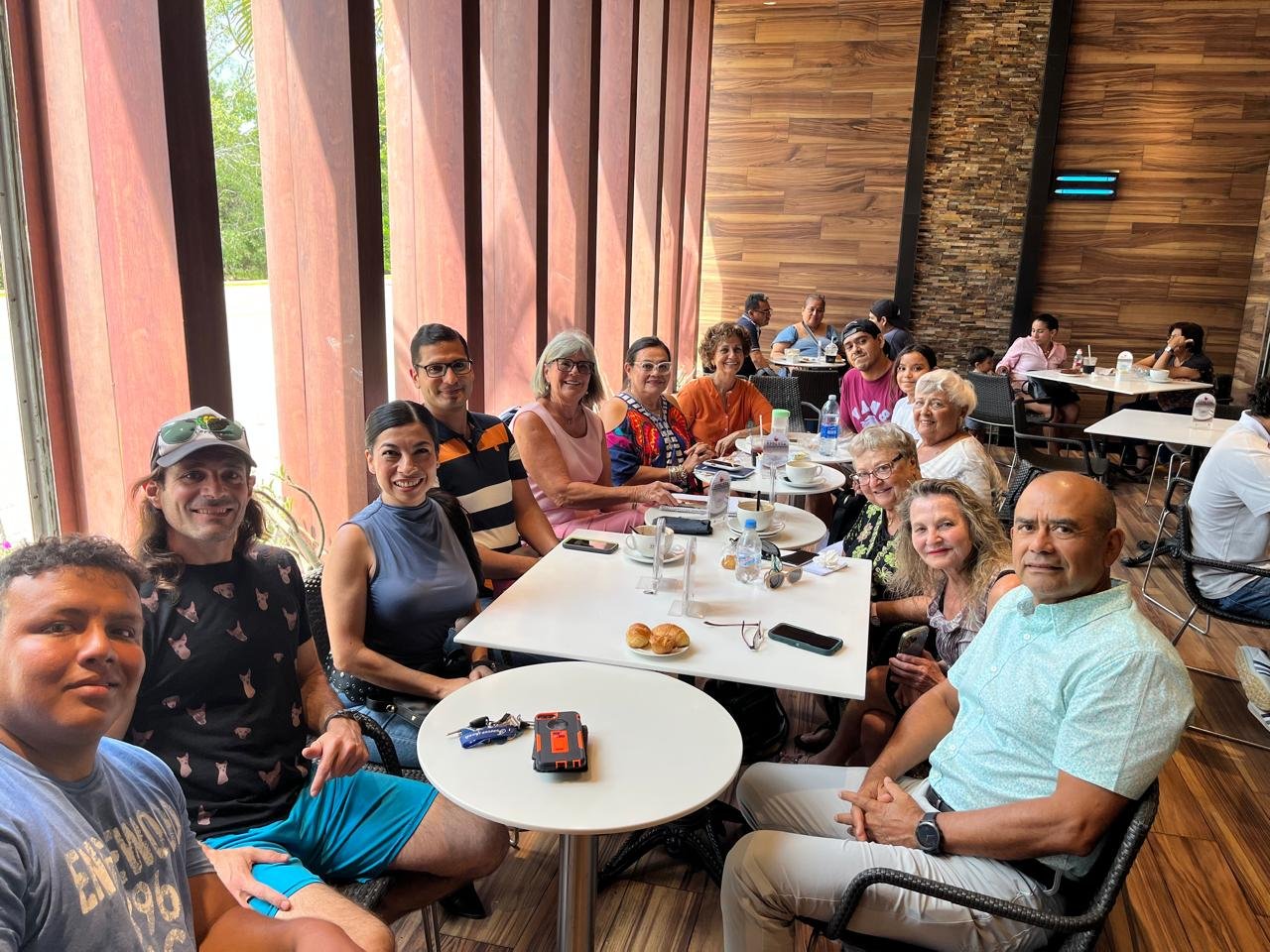
Tuesday Language Group at La Comer.
The language group has now been meeting weekly since February 2021. That’s more than four years. We have a group of regulars who come every week. During those four years, some of the faces have changed as people have moved here and moved away – but we have always had a core group that shows up every week.
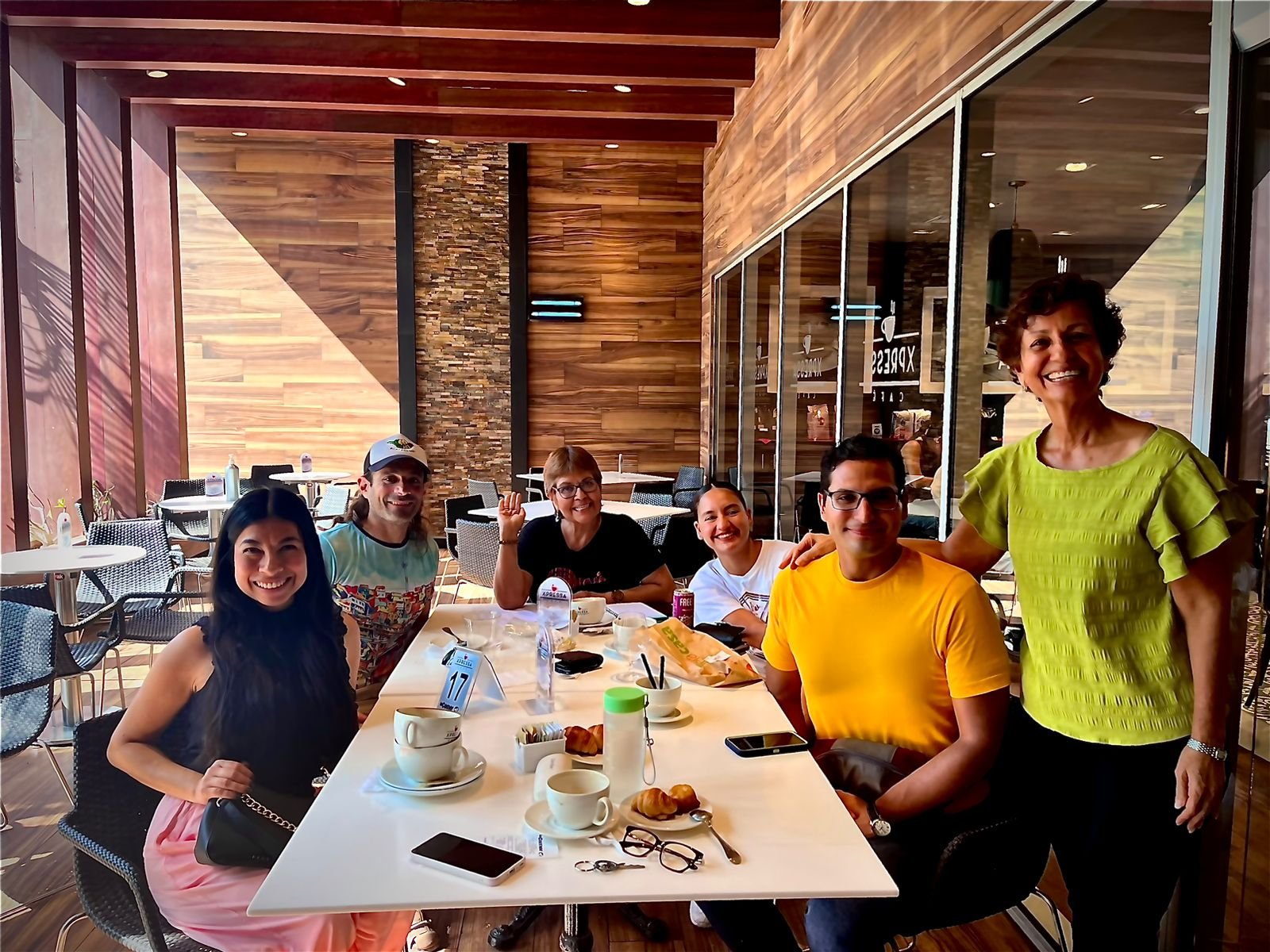
Tuesday Language Group.
Diana sold the café and no longer lives in Manzanillo, but the group continues (and Diana still comes when she is in town).
I made several friends from the group who I count among my best friends – both locals and foreigners. Every single week that I have gone to the language group, I have learned something new. Not just about language – but also about culture, history, people, and life. It’s been one of the most rewarding experiences I have ever had, and it’s all thanks to the people who come every week.
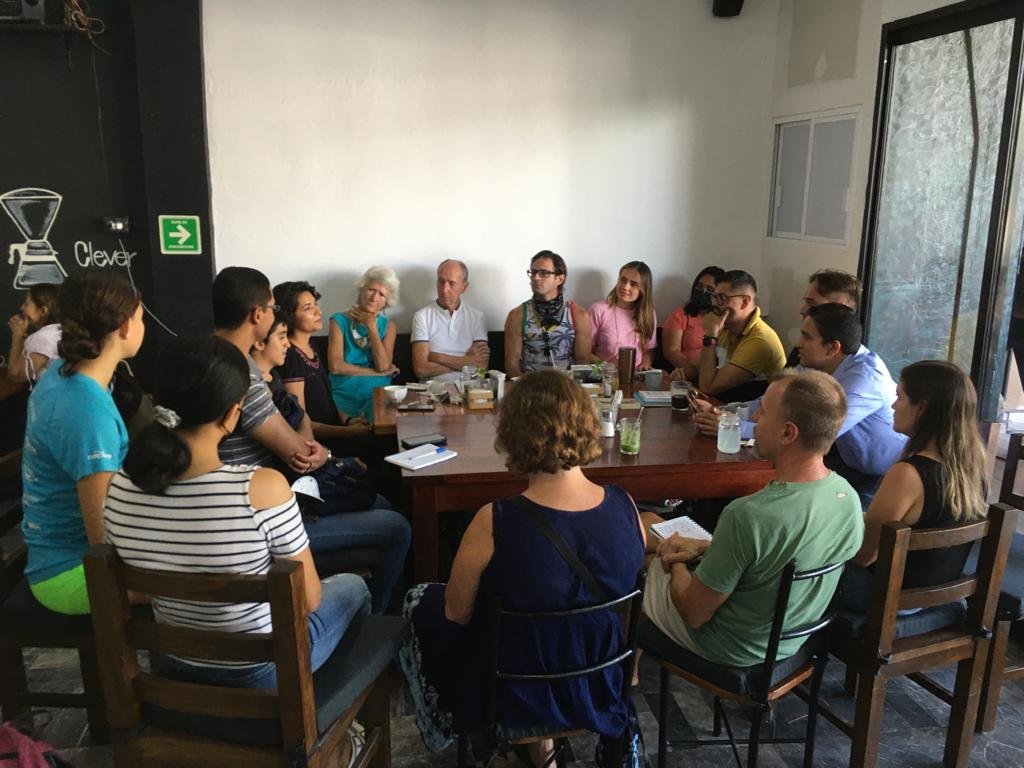
Tuesday Language Group at Café Bean.
After some time, we started a WhatsApp group to keep all of our members in the loop. There are now over 50 people in the WhatsApp group. We send out the discussion prompts the day before the meeting so that everyone has time to think about their answers. Then, we meet and discuss them the following day. It works great.
The group has more people during the winter months because there are several Canadians who spend the winter months in Manzanillo when Canada gets too cold. Those are great months for the group. We often have 10 or 12 people – or more. Even during the ‘’slower’’ months, we consistently have at least 5 or 6 people every week.
One time, a local named Fred (short for Alfredo) showed up to the group. We exchanged numbers and he invited me on a trip to La Audiencia, a local beach, with him and his friends. I met up with them and met a girl named Tere.
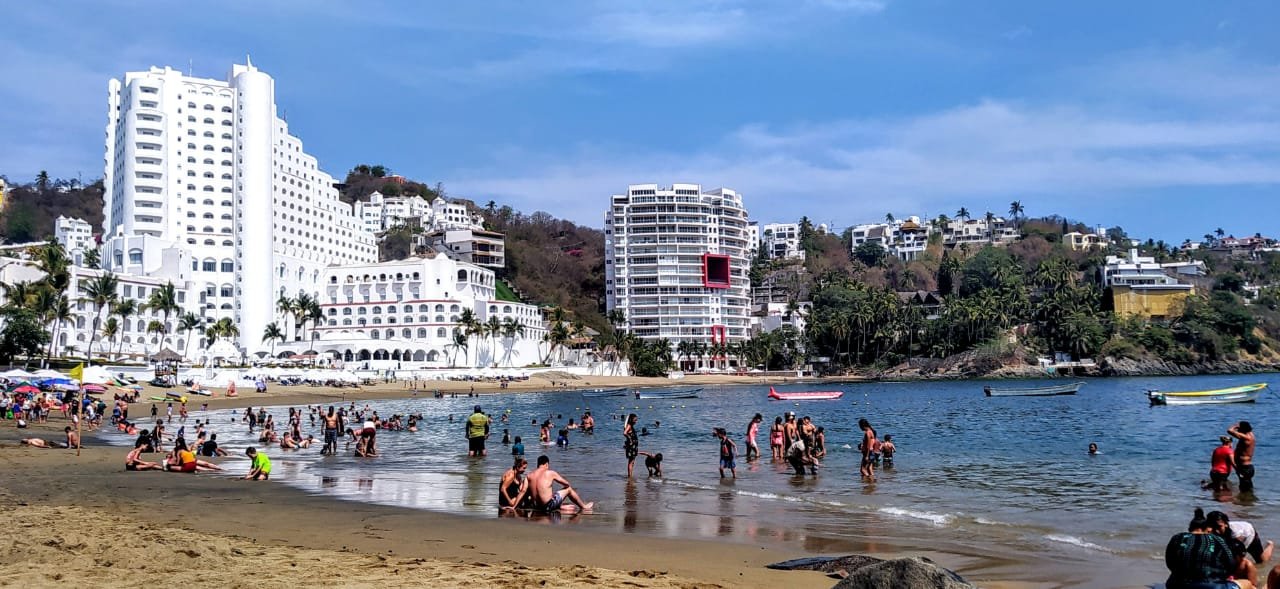
La Audiencia, Manzanillo
A couple of years later, Tere and I were married. That’s how powerful the language group was. If it weren’t for the group, I never would have met Fred – and I never would have met Tere.
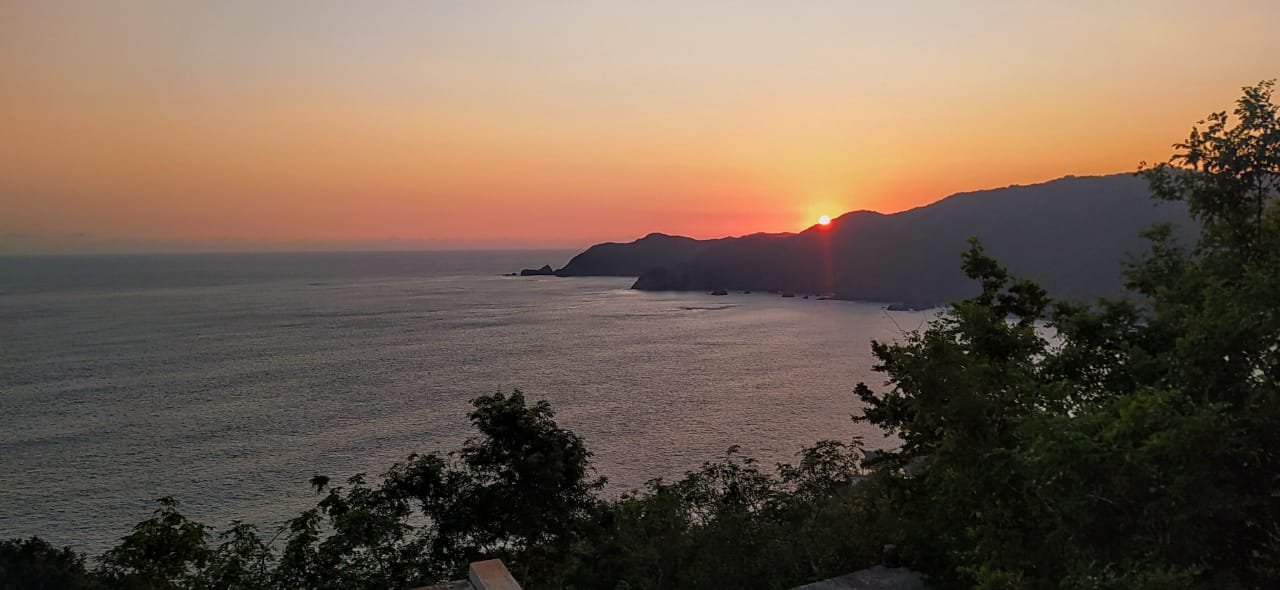
Manzanillo has many amazing views and sunsets.
My First Great Teacher – Tere
Living with Tere was the best thing that could have happened for my Spanish. At the time we met, Tere spoke little English. That meant all of the conversation was in Spanish. When we were dating, I would be absolutely exhausted by the end of the day from talking in Spanish.
Speaking in your second language is heavy brain work, and it can be tiring mentally. But my feelings for Tere were strong enough to make me push through the fatigue and continue to focus on our conversations, even when I was tired.
Speaking Spanish every day with Tere is what made me a Spanish speaker. If you want to learn a second language, there is no better way than to find a significant other who speaks the language. After speaking Spanish every day with Tere, I started to notice that my Spanish was getting better than that of my friends who did not live with a Spanish speaker. It makes a huge difference.
If you cannot date someone who speaks your second language, then try to find a roommate who does. Speaking it every day in your home makes an enormous difference.
In the beginning, it was a struggle for me. I had to work really hard to express myself fully in Spanish and understand everything that Tere said to me. It took a lot of patience on her end when she would have to repeat things because I didn’t understand. It took a lot of patience on my end when there were things I desperately wanted to say but didn’t know how to say in Spanish. It was not only hard mental work but also hard emotional work. It wasn’t easy, but it was worth it.
After months and months of speaking Spanish every day in the house, it finally started to become second nature to me, but there were still major holes in my Spanish game. To reach the next level, I needed someone with deep knowledge of both languages.
That’s when I met my teacher.
The Teacher
Tere and I were still dating when she decided to start studying English. She started taking classes with a local teacher she knew. One day, I asked The Teacher if he taught Spanish, too. He said yes, and I started taking classes. It was the beginning of a great friendship.
The Teacher had a classroom in his house – a whiteboard, table, chairs, and a bookshelf. Most of his students were local kids who were studying English. He did little marketing. All of his students came through word of mouth, and his school has grown steadily since I first met him. He is an outstanding teacher and has deservedly built a great reputation in the community.
The Teacher was born to teach. It’s his nature. He was made for it. When the Teacher is teaching class, he is a man in his element. The Teacher is always teaching, even when he’s not in class. He can’t turn it off. It’s his true calling. I love being around people who have found their true calling. They inspire me.
The Teacher’s name is José, but me and all of his other students call him Teacher. I don’t know if there’s ever been a man more worthy of the title.
The Teacher possesses great knowledge, not only about language but also about history, culture, and life. He is deeply religious and probably knows the Bible better than most preachers. He is someone who I ask for advice, not only about language but about life. He is a person who possesses wisdom – the kind of wisdom that only comes from deep life experience – having lived a meaningful life: doing meaningful work, and having meaningful relationships.
The Teacher was born in Mexico but lived in the U.S. for 25+ years. He has comprehensive knowledge of both U.S. and Mexican culture – which is hard to find. Many teachers have deep knowledge of one or the other, but not both.
Having a deep knowledge of both cultures is important because many idioms and forms of speech don’t translate directly. You can ask a translator or ChatGPT, but sometimes you won’t get the correct answer because there are slang terms that the translator doesn’t know or understand. The only way to translate those kinds of terms is to have someone who knows both cultures well enough to know how they speak. The Teacher has this level of deep knowledge, which makes him an invaluable resource.
I went to the Teacher’s house twice per week for two-hour classes. I broadened my vocabulary and improved my grammar. I improved my abilities and my confidence in my Spanish to the point where I could use it in a business setting.
Before working with the Teacher, I could hold a conversation and accomplish all of the tasks that I needed to function in a Spanish-speaking society (such as going to the doctor and clearing customs). However, I still didn’t feel ready to use Spanish with sophisticated people in a business setting. Working with the teacher got me over that hump – to the point where I felt like I could use my Spanish in a professional setting.
Spanish is no longer a hobby. I now consider myself a professional. Someone who can not only speak both languages but also perform work using both languages in a professional capacity. It took me four to five years of daily practice to reach that point.
I was deeply honored when the teacher asked me to speak at his school’s second anniversary. I got up in front of a group of 20-30 people – all Spanish speakers – and spoke directly from my heart. No prepared speech. No notes.
I told them how lucky I felt to have the Teacher and how lucky we were to have a teacher like him in the community. Not every community has a resource like him. I told them how much I had learned from the Teacher, not just about language but also about history, culture, and life. I also told them that if I have any message, it’s ‘’aprovechar” – to take advantage. Take advantage of the fact that we have access to the Teacher. Study and learn as much as you can because a second language is the closest thing I have found to having a superpower.
I was speaking to myself as much as I was speaking to the audience.
Learning a second language is probably the most powerful skill I have ever learned. Learning a second language opens up opportunities that otherwise would never be possible. It opens up relationships and friendships that will change your life. If it wasn’t for my ability to speak Spanish, I never would have met Tere or The Teacher.
Becoming A Local
You can move to a different country, but if you don’t speak the language, you are limited in who you can talk to and develop relationships with. You are limited only to the people who speak English, which is typically only a fraction of the population. If you speak the local language, you get to know everyone. You get to know things about the people and the culture that you would otherwise never get to experience. By learning the language, you get a different level of access, understanding, and appreciation for the people and the culture.
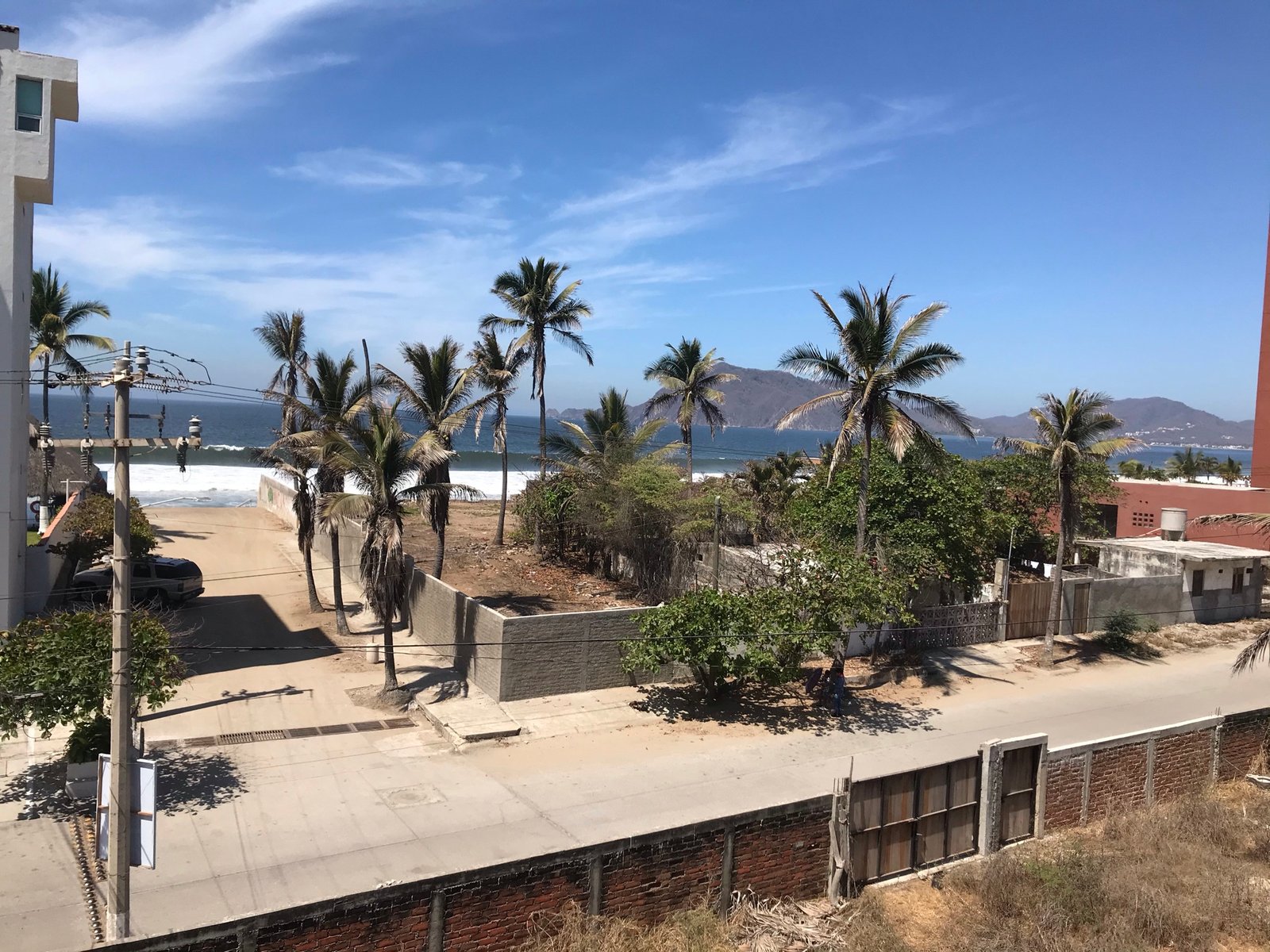
View from my condo in Olas Altas.
If you don’t speak the local language, you are only scratching the surface. By learning the language, you get to see the world through their lens. There are no shortcuts; if you want to be a local, you have to learn the language.
Until you can speak the language, you will always be an outsider no matter how long you live in a place. But once you speak the language and can connect with the local people on their terms, you become one of them. You start to feel at home. You realize that you are no longer a visitor and that the place where you live has become a part of who you are – an inextricable part of your life. Your story will always be inseparably intertwined with this place and the people who live here.
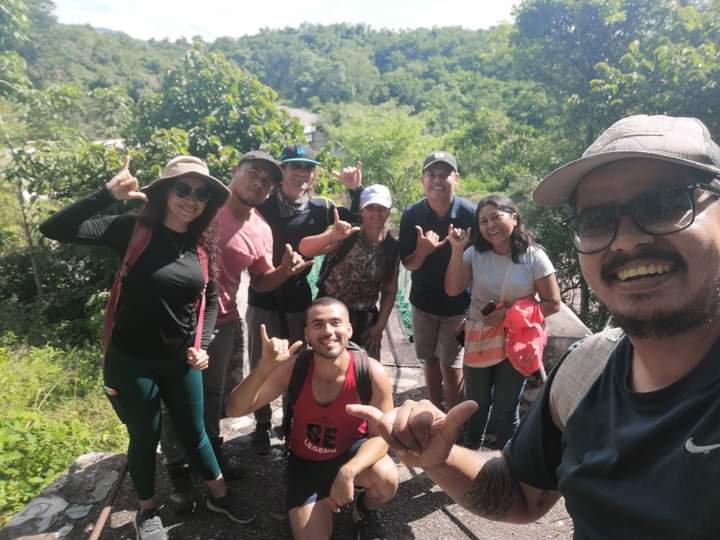
Adventure crew.
The deeper the connections you form, the richer your experience will be. If you cannot speak the language, you will find yourself longing for a deeper connection that is always out of reach. The language is what bridges the gap.
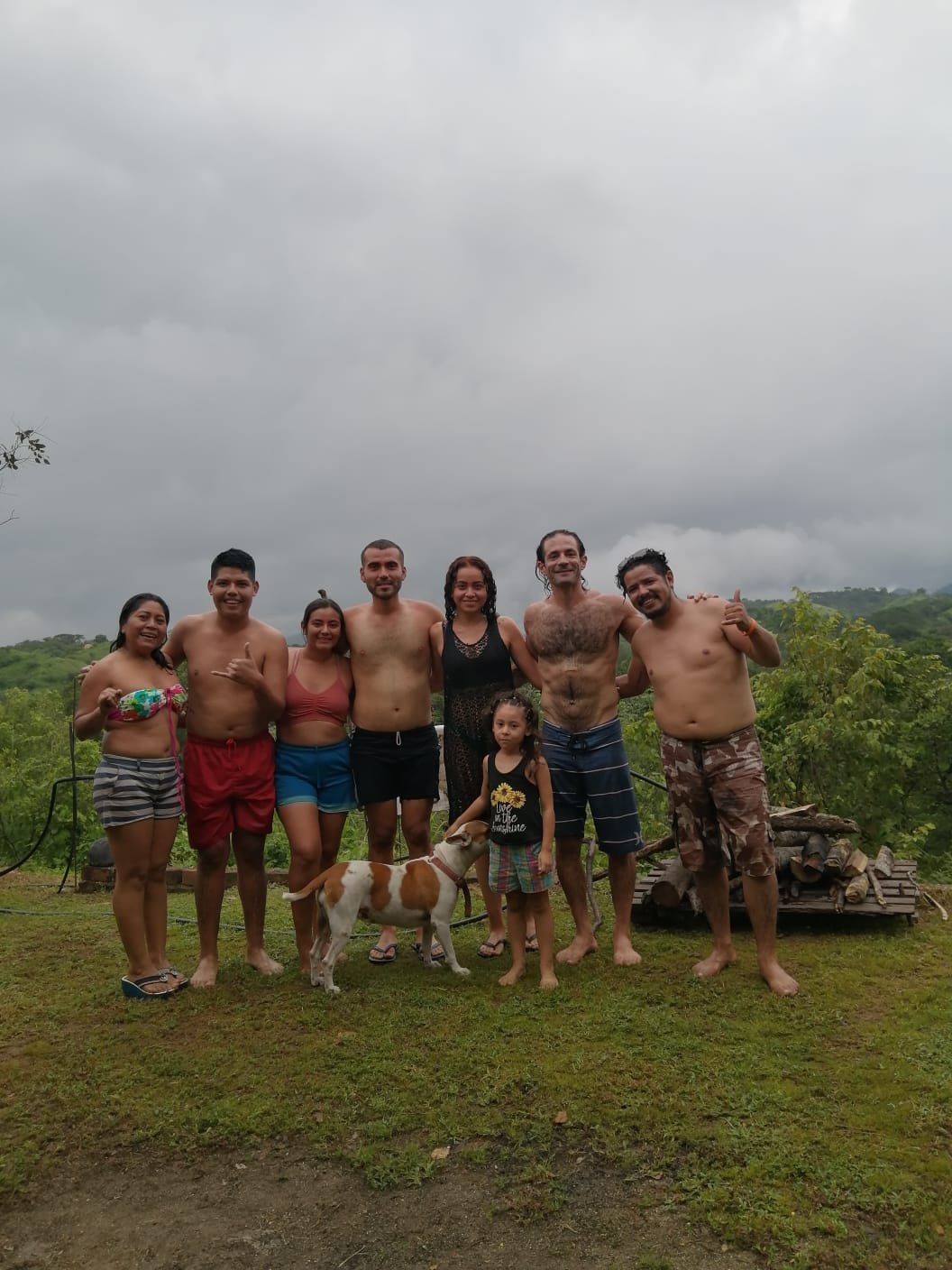
Adventures in the jungle.
Becoming Bilingual as an Adult
Learning a second language as an adult is not impossible. I was 35 when I moved to Mexico and started studying Spanish seriously. It can be done. But it takes daily effort and a lot of patience. Don’t judge yourself too harshly. There will be times when you struggle. You will make silly mistakes. You will forget words that you already knew. Sometimes you will think you’ve got it down, and then you will get humbled. It’s all part of the process. You just have to keep going. The only way you lose is if you quit.
If you keep going long enough, it will be the most rewarding experience you ever have. It was for me. I am far from knowing all there is to know about Spanish (or English, for that matter). But here’s the thing – I never will know all there is to know.
Language is an art form that takes infinite shapes. It’s a lifelong learning process, and the language itself is constantly evolving. There are words in the English lexicon now that nobody used when I was a kid. But you evolve with the language. You learn the regional words and slang terms. You learn about different subcultures and the words they use. You learn to recognize different accents. You learn how young people speak and how old people speak. You learn how rich people speak and how poor people speak. You learn how educated folks speak and how uneducated folks speak. You learn how pretentious people speak and how humble people speak.
There are so many different layers and dimensions to language. It’s a lifelong learning process. The learning never stops, no matter how advanced you are. I am yet to meet a single person who has memorized the entire dictionary, and even if you did, you still wouldn’t know everything because language is always evolving. If you don’t believe me, try reading some of the older versions of the Bible, like the King James version, and tell me that language has not changed a lot over the years. Of course it has. And it will continue to do so. So, you just keep learning and keep evolving. That’s how it is when you learn a language.
You have to keep using it, though. Otherwise, it will rust. The less you use it, the less automatic it will be. Your word recall will get slower. You will forget words that you used to know.
You can brush up on it, and it will come back quicker than if you had never learned it before, but you have to keep using it to keep it polished.
Building language skills is like building muscle in the gym. The more you use it, the stronger it becomes. But if you stop using it, it starts to go away. Keep exercising your language skills daily for best results.
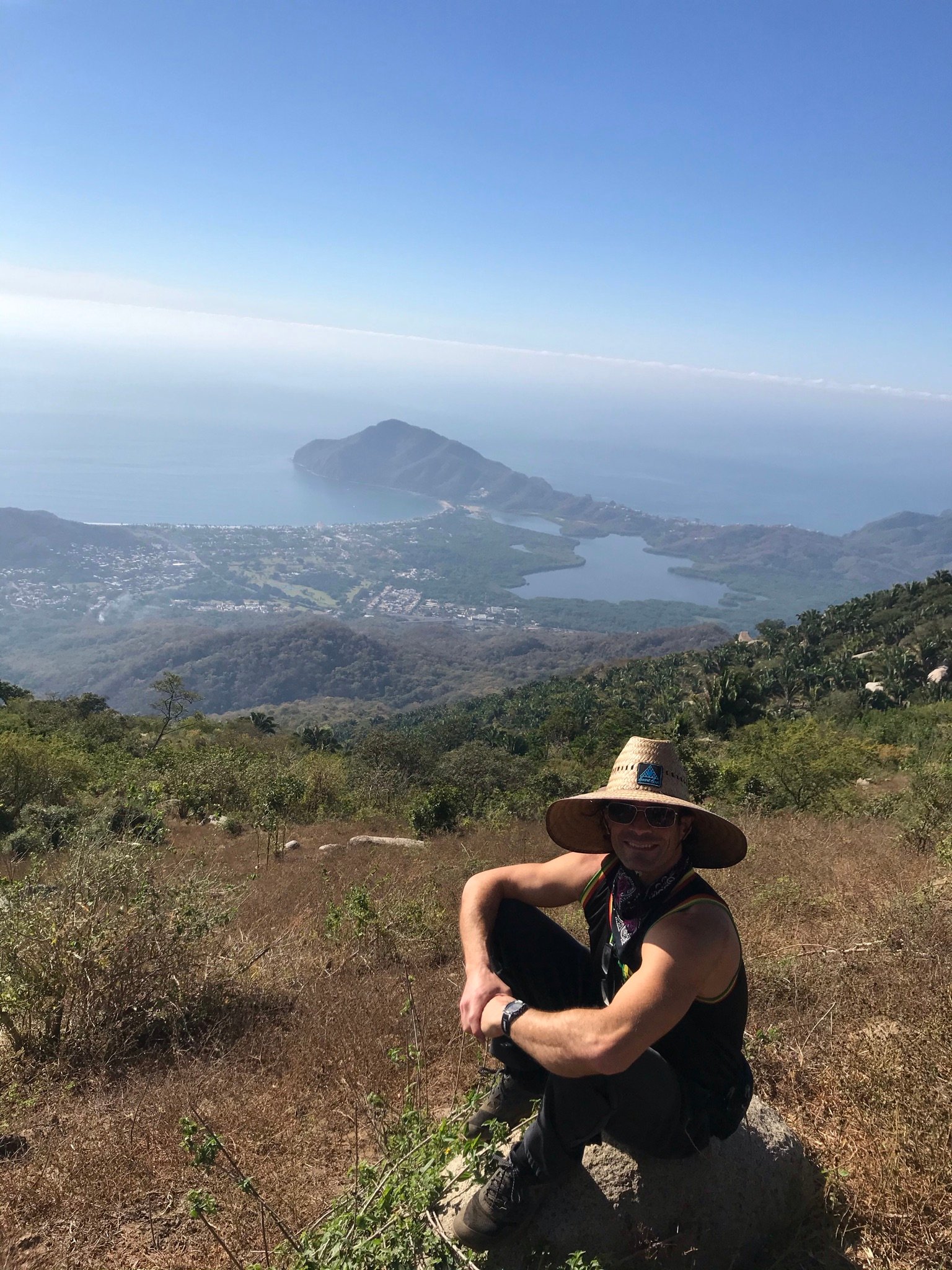
Me at the top of Cerro del Torro, Manzanillo.
More stories by Eddie.
Visit my YouTube channel for surfing, skating, and music videos.

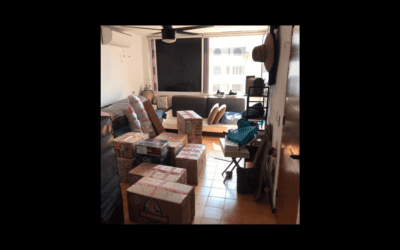
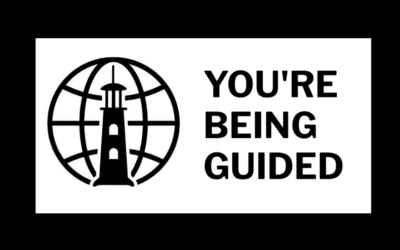

0 Comments